Playing trilanes, an in-depth guide by Peppo_o'Paccio
Peppo_oPaccio
January 24, 2014
1. INTRODUCTION
This guide is made for people who have a decent number of friends to play with and want to either move into competitive gaming or just try tournament lineups: remember that you don't have to play in the high skill bracket to make a trilane work, they always to their job if performed correctly and plssibly grant more entertainment than a common dual lane.
In this guide I will talk about all the things a person who wants to trilane needs to know, from turtling with defensive supports and a hard carry to going 3vs3 in the hard lane and even picking a good support combo: if you already know how to trilane, you may still find something that you didn't know.
I tried my best not to make this guide look a wall of text, I hope all my efforts will be worth the time.
For those who want to read, that's why I published this guide so late (~4 1/2 months later) than expected:

Spoiler: Click to view
So, I worked very hard on this guide in my free time in summer (mainly from half June to half July 2013) but then, especially after the beginning of the Autumn, I left it incompleted as I had other things to do.
I updated it from time to time, following the meta and adding screenshots over screenshots, but never had enough time to (and never had the desire of, if I have to be sincere) add everything.
Now I wanted to release it for Christmas - as if it was a present for you - but I'm afraid the meta will change again by that time and I'd rather edit it after the Christmas holidays.
There are still some things I want to add, but they're not so important.
All the images are made by me or edited from one (or more) anonymous images taken from the Internet; please don't steal them without permission.
1.1 FAQ about trilanes
What is the main purpose of a trilane?
A trilane has several advantages in comparison to a common dual lane (see chapter 1.2): in particular, it offers the possibility for your carry to farm in a very safe way and gives enough room for your supports to either gank mid and off-laners or just get experience and levels without disrupting the carry's farm. There are also aggressive trilanes, which serve to disrupt the enemy's farm and grant free kills if performed correctly.
Why do competitive players always opt for a trilane?
This is an easy question, but needs a few points to be answered: first, you let your carry free farm and get more experience while, at the same time, zoning out the enemy off-laner(s) and letting them get little to no exp and gold. Also, having two supports in the safe lane means that they can share the experience from the creep pulling camp which results in letting your off-laner get more farm and letting your supports get enough gold and levels to be useful. Lastly, two supports make safe lane kills much easier if they synergize well with each other, plus they can gank other lanes and bring even more advantage to the team.
What is the standard lineup for a trilane?
In case you still don't know, trilanes are played with two supports that focus on giving the biggest amount of farm and experience to the carry: usually, there's one support that gets as many levels from creep pulls as possible (who gets the
"4" position) and another support who is often left with boots and wards for the first 15 minutes (aka the hard support or
"5" Hero); the trilane carry is often referred to as the
"1" Hero. These numbers show the amount of farm a Hero gets: the smaller the number, the higher the net worth and gold.
Why are some common pub supports considered useless in trilanes?
In pubs, especially in the lower bracket, many easy Heroes that don't need farm are used to babysit the carry: they either have heals or enough nuke damage to repel the enemy laners. The problem is that they either need too many levels to be effective (
 Dazzle
Dazzle's
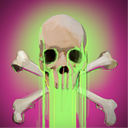 Poison Touch
Poison Touch) or don't have any stuns or big nukes to set up kills (
 Necrophos
Necrophos,
 Warlock
Warlock,
 Witch Doctor
Witch Doctor and especially
 Omniknight
Omniknight). Now, I don't discourage to play those Heroes as supports, but unless you have a certain strategy in mind you'd better stay away from them, especially if you're trilaning for the first time.
Why is this Hero played as a support? I thought he/she was a mid laner!
This question is always brought up by
 Nyx Assassin
Nyx Assassin players but is valid for Heroes like
 Skywrath Mage
Skywrath Mage and
 Clockwerk
Clockwerk (though they're not very common supports), too: they
can be played in the mid lane and, due to them being extremely easy to feed, pub players always use them this way; in fact they don't need anything in order to be effective: as long as you have a maxed-out
 Impale
Impale and a level of
 Vendetta
Vendetta, wether you are a level 6 support or a level 9 mid laner your targets will be the same and will die after your combo. See chapter 2.1 for more information.
What do supports do in 3vs1 trilanes, as they mustn't steal the carry's exp and farm?
There are hundreds of things trilane supports can do in their "spare time", knowing what to do and when to do it shows the difference between good and bad supports: zoning out the enemy laner(s) is the main priority (especially in the first 2 minutes when the carry has poor last-hitting capabilities), but creep pulling is definitely important unless you want two level 1 supports at 5 minutes and no wards. Other common things a support can do is stacking jungle camps, placing wards, securing runes or ganking the mid lane with a
 Smoke of Deceit
Smoke of Deceit. Oh, and always have a
 Town Portal Scroll
Town Portal Scroll ready: being able to teleport at any time is one of the best things you can do as a support!
Help! There are three enemies against my safe trilane! What do I do?
First, don't panic: if you play it correctly you might end up as the winner of the trilane fight. Second, ask yourself some questions:
"Is our trilane better than theirs?" "Can we take advantage of this situation and win the lane?" Most of the time, if an enemy wants to trilane against you they think you've been outdrafted (which means they drafted better, so they have better picks): in this case, play it safe; you can try to pull off more kills than the enemy, but if you fail twice in a row you'd better take advantage of your position and creep pull/last hit under your tower, depending on your role. If their trilane is worse than yours, they might have a hard carry soloing against your hard laner (which is a very common strategy in high level games): in this case, try to pressure the opponents for the first 5 minutes so that your team's carry gets some farm; then, if you know you won't fail, pop your
 Smoke of Deceit
Smoke of Deceit and gank the safe lane carry using your team's supports. These are the basics of a safe trilane fight: if you want to improve, just practice more.
1.2 Pros and cons about the trilane
Pros
- Grants free and safe farm to your carry
- Leaves little to no farm to the enemy laner(s)
- Lets your team pick an off-laner
- Makes mid lane ganks very easy
- Possibly grants more kills
|
|
Cons
- Requires more experience (as a player) than a dual lane
- Requires 3 Heroes, thus leaving the hard lane empty while playing with a farming jungler
|
Obviously, the pros outweigh the cons as the latters can be bypassed with practice or a more intelligent draft; always remember that there are many ways to improve and that there's always room to experiment new trilane lineups, may them work or not.
2. ROLES AND ITEMS
As said in the FAQ chapter, trilanes always consist of a carry, a semi-support (the one that gets most of the experience and gold from the creep pulls) and a hard support (which usually focuses on buying wards or roams): in the following chapters we will talk about the efficiency of some popular Heroes and possibly list the ones that are mistakenly played as a carry or, on the contrary, the solo laners that are usually played as a support in pubs.
Talking about items, as there are many objects that should never be skipped we will list them as well: a correct item build is very important for both supports and carries as the trilane is your main source of late game power and early game dominance.
2.1 Roles: support
Remember when
 Abaddon
Abaddon came out? At first competitive teams were pretty skeptical about him as his nuke's not that great and there were many other melee supports to choose, then they started experimenting new lineups (including the popular Weaver-Abaddon dual hard lane) and different skill builds (Coil first; Shield first) and brought this Hero into tournaments in very little time. Particularly, his hidden potential regarding tower dives and aggressive trilanes has been discovered first: not only the
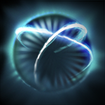 Aphotic Shield
Aphotic Shield protects you from hits, but it also damages the surrounding enemies when it breaks!
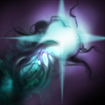 Mist Coil
Mist Coil also has an enormous range and can be used to heal allies in crucial times and, above all, denying yourself if timed well. The passive ability,
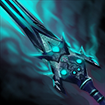 Curse of Avernus
Curse of Avernus, is not notable early on so it should be skilled last, but as
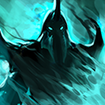 Borrowed Time
Borrowed Time makes you almost invulnerable for 5 seconds you can afford to go near the enemies and catch them to grant your teammates bonuses. Also, even though the ultimate makes you very difficult to kill even when you're alone (provided you can reach your teammates before the buff ends), big nukes that one-shot you when you have more than 400HP are deadly.
 Bane
Bane was born as a direct counter to Lifestealer: when he was very popular, the only way to counter him was a disable that went through his Rage; nowadays, this Hero is picked for two reasons: his
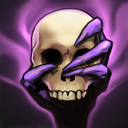 Fiend's Grip
Fiend's Grip counters all those BKB carriers and his
 Nightmare
Nightmare is a perfect setup for ganks.
 Brain Sap
Brain Sap is an excellent nuke that, as long as you don't spam it, only needs a pair of Arcane Boots to be sustained while
 Enfeeble
Enfeeble goes through BKB as well and annoys the enemy carry as nothing else does. He's commonly paired with Lina, Leshrac or Jakiro (as they can follw up right after his disable) or with another controller like Rubick to have a really strong teamfight control lineup.
As soon as the
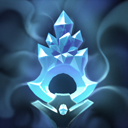 Arcane Aura
Arcane Aura got nerfed,
 Crystal Maiden
Crystal Maiden disappeared from the competitive scene: she doesn't scale into late game at all, and her ultimate was overlooked. But then, after the 6.79 patch, this Hero became the #1 pick in every tournament! Nowadays competitive teams experimented new item builds, especially after the Tranquil Boots rework: one of the build with the highest success featured the Phase Boots as a first item too, but as the Tranquils are the best choice for a ganking Hero since their rework CM players usually stick to them. As soon as you get the mobility from your Boots, hitting those
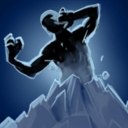 Frostbite
Frostbites will be much easier and landing good
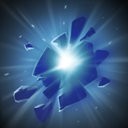 Crystal Nova
Crystal Novas will be a piece of cake: even though this Hero has a big mixture of nukes and disables, she was overlooked because of her mobility; getting the
 Freezing Field
Freezing Field at level 6 instead of waiting for level 10 and 11 has become normal now, too. The
 Arcane Aura
Arcane Aura is still a bit weak, but it's worth putting two skill points on before level 6. Also, don't get a Meka on her anymore: the HP from the Urn and mobility from the Force Staff are usually better.
 Earthshaker
Earthshaker is a very situational Hero but he has been proven good the few times he was picked: his
 Fissure
Fissure is possibly the best long range AoE stun in the game, while the
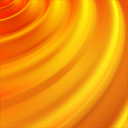 Aftershock
Aftershock ensures that his stuns will scale into late game. His main problem is the mana, hence why he usually starts with a couple of Clarities and his
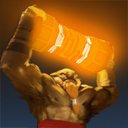 Enchant Totem
Enchant Totem is not levelled early; his ultimate,
 Echo Slam
Echo Slam, is a gamebreaking spell if used at the right moment but, until you get that Blink Dagger, it's very difficult to land. Some team tried to use his
 Fissure
Fissure to pull the hard lane creeps to the ancient camp in the Dire side: it does work and gives some farm to the off-laner, but as it requires a lot of clarities and can be easily denied with an Observer Ward in the ancient camp it's rarely used nowadays.
 Io
Io was the support that won games: it was always first ban material because of its usefulness, but since the 6.79 tether rework it became less and less noticeable. But still, even if you don't get a stun from the Thether anymore, getting a carry that makes you able to
 Relocate
Relocate and one-hit Heroes all over the map (such as Chaos Knight, Tiny, Sven or Riki, in order of priority) is more than enough to kill enemies. Remember that
 Overcharge
Overcharge not only adds attack speed and damage resistance to the target you're tethered to without giving the degen, but also makes you able to heal your friend with an Urn charge even when you're at full health just by toggling it on. If you continuously gank as soon as your
 Relocate
Relocate is off cooldown, you should get enough kills to win the mid game and destroy the ancient: of course you need aggressive warding to perform easy ganks, but aside from that
 Io
Io gives you free kills for almost nothing. Also, remember to costantly use him for dual support ganks! The movement speed increase from the
 Tether
Tether plus the (almost) overpowered
 Spirits
Spirits deal a ton of damage in conjunction with a disabler like Vengeful Spirit or Crystal Maiden.
 Jakiro
Jakiro is one of those Heroes that was a first-pick everytime he wasn't banned but now, after some nerfs, is much more rare: his
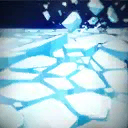 Ice Path
Ice Path is still a good stun, especially after a setup spell like Rubick's Telekinesis or Shadow Demon's Disruption, and his teamfight contribution is huge thanks to
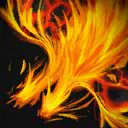 Macropyre
Macropyre and
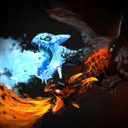 Dual Breath
Dual Breath, a slowing nuke that should always be maxed out by level 7.
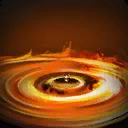 Liquid Fire
Liquid Fire is a decent repellent against aggressive laners: as soon as you put points in it you'll realize how much its AoE and slow does, especially against towers.
This is an interesting one: after the TI2 tournament
 Keeper of the Light
Keeper of the Light was considered by many the best Hero in the game (I'm not exaggerating), but nowadays he's always overlooked unless playing an aggressive trilane; simply, when there's a KotL against your trilane you
can't win but just resist, unless you have heavily outdrafted the enemy team. His
 Illuminate
Illuminate received a small nerf, but it's still able to clear creep waves and deter enemy Heroes dealing a ton of damage;
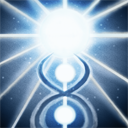 Chakra Magic
Chakra Magic is the core of many trilane compositions and makes the whole lane able to costantly spam spells.
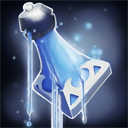 Mana Leak
Mana Leak is useful as the game progesses (hence why it's skilled after level 9) while the spells unlocked with the
 Spirit Form
Spirit Form,
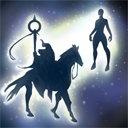 Recall
Recall and
 Blinding Light
Blinding Light, are terrific at all stages of the game: the former makes you able to bring your farming carry or your ally that just TPed to the fountain into the fight, the latter is fundamental while teamfighting since the evasion is
huge, no matter what you may think.
After his period of prosperity
 Leshrac
Leshrac has become less and less played: nowadays he still has a valid reason to be played because of Shadow Demon and the other Heroes with a setup for his stun, but as he needs to be in a pushing team to be effective he's not that common. Still, his
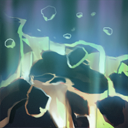 Split Earth
Split Earth is one of the best AoE spells in the game and the
 Diabolic Edict
Diabolic Edict does a ton of damage to structures and lone enemies; don't forget it works even after your death.
 Pulse Nova
Pulse Nova is a decent ultimate but requires some mana, while
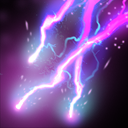 Lightning Storm
Lightning Storm was rarely levelled up (since he needs more mana from stats) but is slowly becoming the main skill that has to be maxed out first. I still love him as a support because he's item independent and his ganking potential is very high.
 Lina
Lina is the typical pick when you have any form of setup, from Shadow Demon's Disruption to Nyx Assassin's Impale: her nuke potential is enormous thanks to the
 Light Strike Array
Light Strike Array plus
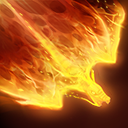 Dragon Slave
Dragon Slave combo, which consumes a small amount of mana and is quite spammable.
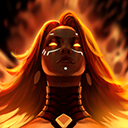 Fiery Soul
Fiery Soul can be useful when you stay in the back of a teamfight spamming your spells and
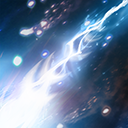 Laguna Blade
Laguna Blade is the classical one-hit nuke that should be used against the most dangerous Hero in a teamfight. She is a very good counterpusher and ganker, that's why she used to be very common: even though her HP aren't that many, she should be able to give enough advantage in the early game not to need them anyway.
Does your team have too few disables? Then
 Lion
Lion is what you need: at level 2 he can stun multiple targets with his
 Earth Spike
Earth Spike and disable another one with the
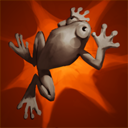 Hex
Hex; his skills are a good setup for chainstuns or big nukes like Skywrath Mage's Mystic Flare and, if that isn't enough, the
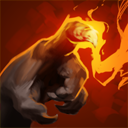 Finger of Death
Finger of Death gives the killing blow.
 Mana Drain
Mana Drain is an interesting ability but, unless you're mid laning or facing a Hero that usually summons illusions, you'd better put more points in stats than in
 Lion
Lion's third ability. This Hero is very powerful but, as his HP is pretty low, he's not picked unless you really need those disables and nukes.
As the "newer" Heroes (Troll Warlord, Centaur Warrunner, Abaddon..) were added to the Captains Mode, a new melee support started taking the place of Nyx:
 Naga Siren
Naga Siren. She has the typical setup disable that many other supports have (Bane, Rubick, Shadow Demon etc.) with the exception that it makes you hit the enemy Hero for longer and
goes through Black King Bar, so the scaling for Naga's not a problem even if she doesn't have any items;
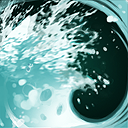 Rip Tide
Rip Tide is not only an istant nuke that pairs well with the
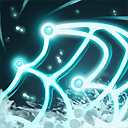 Ensnare
Ensnare but also an armor-redcing ability that scales pretty well.
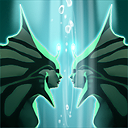 Mirror Image
Mirror Image makes farming easier when the later stages of the game arrive and is also a safe way to throw your nuke. Finally, the
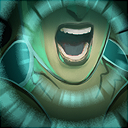 Song of the Siren
Song of the Siren is a very unusual teamfight ultimate that can be used both defensively (to actually save allies from death and then TP away) or offensively so that you can start a teamfight with the best positioning ever. The cooldown of her abilities are pretty low (except for the illusion-creating one, but you shouldn't spam it anyway) and a pair of Arcane Boots is everything Naga needs to sustain herself.
 Nyx Assassin
Nyx Assassin has definitely been between the top 5 supports for a long time, and there are a few reasons behind it: he has a big arsenal of nukes that scale amazingly well into late game and are good in the early game as well. For example, spamming
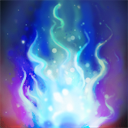 Mana Burn
Mana Burn reduces the enemy Hero's mana to zero, while
 Impale
Impale is a good setup for trilane ganks and, at the same time, a nice initiation tool for the mid game if used correctly.
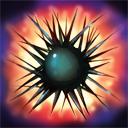 Spiked Carapace
Spiked Carapace works as an escape mechanism while
 Vendetta
Vendetta can be used for both escaping and setting up easy kills, especially with the help of an ally. As
 Impale
Impale can't directly target enemies, you need to predict the enemy movement a bit.
 Rubick
Rubick is usually picked to counter some Heroes with big teamfight ultimates such as Magnus or Puck, but his usefulness goes beyond his
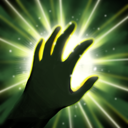 Spell Steal
Spell Steal:
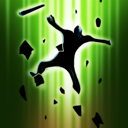 Telekinesis
Telekinesis is an awesome setup for Heroes like Leshrac, Lina or Jakiro and can be used to drag the enemy in the low ground, very useful especially if you plan on ganking the mid lane.
 Fade Bolt
Fade Bolt is both a nuke and a counterpush tool which can also be used to reduce the enemy DPS thanks to his passive effect while the Null Field, even though it doesn't seem so useful, plays an important role against big nukers like Zeus, Queen of Pain, Storm Spirit or, again, Puck.
when I think about a support ganking duo
 Shadow Demon
Shadow Demon istantly pops off my mind: not only his
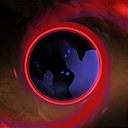 Disruption
Disruption is the best setup for AoE stuns, his Soul Catcher even amplifies the damage he deals to the enemies!
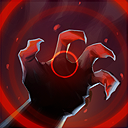 Shadow Poison
Shadow Poison is also a decent scouting tool and can be stacked on the enemies before starting a fight while the
 Demonic Purge
Demonic Purge, coupled with
 Disruption
Disruption, makes you able to mess up with the positioning of two enemies in the same teamfight. Always pick Lina, Leshrac, Jakiro or even Kunkka when you have a
 Shadow Demon
Shadow Demon in your team, or you won't use him at his maximum potential.
 Skywrath Mage
Skywrath Mage is not a common pick at all, but he counters many squishy Heroes that rely on their skills to escape, Weaver being on top of the list:
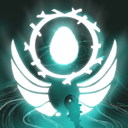 Ancient Seal
Ancient Seal silences for a pretty big amount of time, during which you can spam your
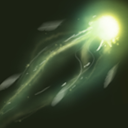 Arcane Bolt
Arcane Bolt and deal as much damage as possible. As soon as you reach level 6, ganks become a lot easier: provided your support partner has a stun or disable, the
 Ancient Seal
Ancient Seal plus
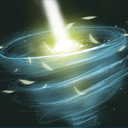 Mystic Flare
Mystic Flare combo deals a lot of burst damage. Also, many people overlook the
 Concussive Shot
Concussive Shot because you usually level it up last, but even at level 1 its slow, which doesn't scale anyway, is
huge.
Finally,
finally someone has discovered the hidden potentials of this Hero: considered by many the worst support,
 Treant Protector
Treant Protector can actually do what no-one else does: he wins lanes from the other side of the map. His
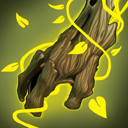 Living Armor
Living Armor, spammed on the mid or off-laner, makes them almost immune to the enemy for the whole duration, during which they can harass or last-hit freely. Also, the Armor seems almost overpowered when you use it on a friendly Hero that is tower diving, since the tower will deal little to no damage to him.
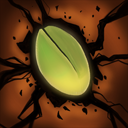 Leech Seed
Leech Seed is an interesting hybrid nuke/slow/heal that works well even in teamfights (and particularly when you're invisible with
 Nature's Guise
Nature's Guise), while
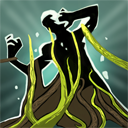 Overgrowth
Overgrowth is an excellent setup for other big teamfight ultimates such as Reverse Polarity, Scream of Pain, Dream Coil or Call Down.
 Nature's Guise
Nature's Guise is definitely overestimated in pubs: it's not that bad, but wasting time on hiding teammates when they're near trees is definitely less handy than using a Smoke of Deceit. Still, you can make surprise ganks/initiations if you use it on yourself and, hopefully, win fights. Just don't rely too much on it or you'll spend a lot of time invisible doing nothing.
On paper, a Hero like
 Vengeful Spirit
Vengeful Spirit seems too good not to be popular: a long range high-damage stun, a scouting tool that reduces armor, a BKB-piercing ultimate and initiation tool and the
 Vengeance Aura
Vengeance Aura. Actually, she's very situational: her
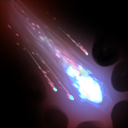 Magic Missile
Magic Missile is awesome, but there are many disables that work as good as it (Impale, Earth Spike, Ice Path, all the setups...) and, as a pushing Hero, there are better choices such as Leshrac, Visage or, talking about mid laners, Beastmaster. Still, she works wonders as a roamer and her focus on physical damage makes her a perfect candidate for a Medallion of Courage and for early Rosh attempts. You can use the
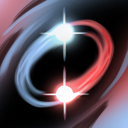 Nether Swap
Nether Swap as a pseudo-Flaming Lasso or Meat Hook, and can sometimes save your teammates' lives, but unless your team is focused on pushing and reducing armor (which is still a good strategy, huh) you should pick something else. I still like her skill setup though, if you're not experienced as a trilane support player she's a very good Hero to start roaming with, considering that her
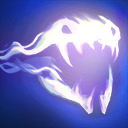 Wave of Terror
Wave of Terror gives vision too.
 Venomancer
Venomancer is a very strong support Hero because of his versatility: even though he can't be more than a support, his skillset make him good in a variety of situations, from ganking to counterpushing and teamfighting.
 Venomous Gale
Venomous Gale is hands down the best level 1 disable in the game (even though it doesn't deal damage), while
 Poison Sting
Poison Sting is really consistent and adds up when spotting and chasing an enemy Hero. The
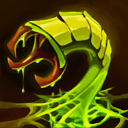 Plague Ward
Plague Wards tend to be weak before level 5 since they mostly feed gold to the enemy team, but since they're so good at defending and scouting (and also cost a minimal amount of mana) they should be maxed out at level 7; plus, considering your current level of
 Poison Sting
Poison Sting is linked to the wards, you might want to max it second. Sometimes, though, getting more points of your slow helps in dealing the killing blow to the enemies hit by
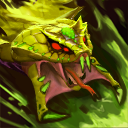 Poison Nova
Poison Nova, since it deals non-lethal damage. Talking about this ability, don't underestimate it since it's very noticeable in prolonged fights and is really painful for supports! It doesn't deal much damage at level 6, but it's still too good not to be taken at the standard levels.
Do you want to play a very aggressive trilane? Then
 Visage
Visage is what you're looking for:
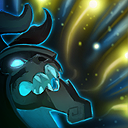 Soul Assumption
Soul Assumption is his main source of damage and should be maxed out by level 7 as the damage increase is awesome, while
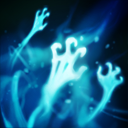 Grave Chill
Grave Chill works very well as a slow and can be occasionally used as an escape mechanism as it also gives you more movement speed.
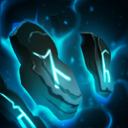 Gravekeeper's Cloak
Gravekeeper's Cloak makes you almost immune to spells like Laguna Blade or Finger of Death (unless the enemies throw something else before them), but the real overpowered feature of this Hero is his ultimate,
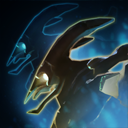 Summon Familiars
Summon Familiars: if used incorrectly this gives free gold to the enemies and leaves you with little mana every time you summon them but, in the right hands, the Familiars not only push very efficiently and can be used to farm jungle camps and help in killing Heroes, but are also a valid form of AoE chainstun in teamfights. If you are a good observer, you should've realized that the item build is weird: the Medallion helps a lot since the Familiars deal physical damage and can also be used to fight Rosh, while Agh's makes you a true tank and adds a third Familiar (and a potential third stun) to your arsenal; some teams prefer Treads over plain Boots, but the majority of players think they delay the Scepter too much and should be picked after it, unless your team's losing. Some teams like playing
 Visage
Visage in the safe lane getting solo farm from the creep pulling camp and letting him reach level 6 as soon as possible, but playing him as an aggressive support is way easier since you don't have to worry about your farm and experience too much.
2.2 Roles: carry
 Alchemist
Alchemist has recently become quite popular as he's very versatile: his normal mid-game skill build focuses on maxing-out
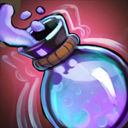 Unstable Concoction
Unstable Concoction first and gank with your 12-minute Shadow Blade, while the free farming one either means going for a Hand of Midas and a maxed-out
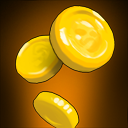 Greevil's Greed
Greevil's Greed or getting spare points in Concoction and
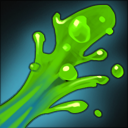 Acid Spray
Acid Spray to push, farm the jungle and, when needed, gank with your big stun. This Hero is mainly played with the Shadow Blade, but early Radiance attemps have been tried too, especially against Heroes that rely on a Blink Dagger to land teamfight ultimates such as Magnus. Other common extensions are the Armlet of Mordiggian (since his ultimate gives so much HP regen that you don't lose health with it) and the Maelstrom. Always get a BKB, especially in this teamfight-oriented meta. Consider delaying the Abyssal Blade if you're up against a Hero with evasion or a Butterfly-carrier.
The king of the afk-farming carries,
 Anti-Mage
Anti-Mage, is still a popular pick in the current meta: if the trilane can afford enough time to let him farm, a Hero with Battle Fury and Manta Style at 25 minutes that split pushes everywhere and can always escape thanks to his
 Blink
Blink will always be a big threat. When you're farming with
 Anti-Mage
Anti-Mage, remember to put at least 2 stat points instead of levelling up your skills: you should max-out your
 Blink
Blink as soon as you get your Battle Fury (level 9-10), your
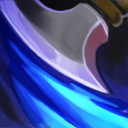 Mana Break
Mana Break when you get Manta Style (level 13-15) and your Spell Shield whenever you want, depending on the enemy team composition. When teamfighting always jump in after the initiation occurs, so that you can either take advantage of that if the initiation is from your team or counter-initiate if the enemies did the first move; remember also that
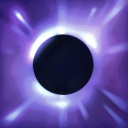 Mana Void
Mana Void deals AoE damage: if the enemies are all grouped up, target the one you attacked the most and see the enemy health drop. Always remember the #1 rule when picking this hero: the less stuns the enemies have, the more AM is effective.
This Hero is the instapick for when you manage to pick a Wisp: combining them both you can gank anywhere at any time and get a huge amount of kills.
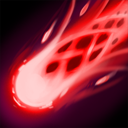 Chaos Bolt
Chaos Bolt has a relatively long range and stuns for a big amount of time;
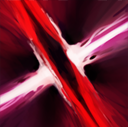 Reality Rift
Reality Rift pulls the enemy towards you for when you succesfully stun someone and even adds damage to your next attack!
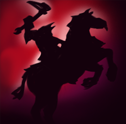 Phantasm
Phantasm is an interesting ultimate that works wonders especially if you turn your Armlet on before summoning the illusions; remember not to skill this ability before level 10 because it would be useless and you don't have enough mana to sustain it.
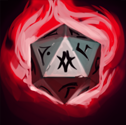 Chaos Strike
Chaos Strike scales well into late game and adds just few damage early on, so don't put points in it before maxing out the other two non-ultimate spells. If your team doesn't have a Wisp, consider picking this Hero only if the other mid-game carries (Gyro, Lifestealer, Alchemist...) are all banned and you need someone who doesn't require a lot of farm, while at the same time the enemies don't have much AoE.
Even though he's one of the least used hard carries,
 Faceless Void
Faceless Void is still a decent option when you have a free farming lane but you need to have a lot of global spells and teamfight ultimates in your arsenal: a mixture of Thundergod's Wrath, Nature's Wrath, Ice Blast, Call Down, Scream of Pain, Ravage, Static Storm, Pulse Nova, Macropyre, Sanity's Eclipse, Tombstone and stuff like that makes a
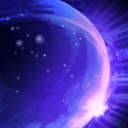 Chronosphere
Chronosphere possibly the best initiation tool of the game.
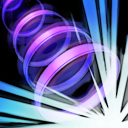 Time Walk
Time Walk is another very useful ability: it makes you able to escape, initiate fights, chase and gank from nowhere, plus it grants flash farm in the jungle and lets you jump from the Radiant hard camp to the Dire ancient camp and vice versa. Backtrack and
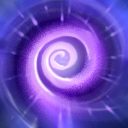 Time Lock
Time Lock are two defense and damage steroids that scale into late game and provide an early edge of advantage (have you ever had lucky Backtracks or a
 Time Lock
Time Lock hit that stunned the enemy long enough to get him killed? I'm sure you had!), plus the already high autoattack damage from this Hero makes early farming a piece of cake even without a Quelling Blade. I strongly recommend trying this Hero in a teamfight-oriented team, especially with global spells as said before.
 Gyrocopter
Gyrocopter is arguably the best carry in the current meta: when played in trilanes his
 Rocket Barrage
Rocket Barrage consumes almost no mana and deals a ton of damage;
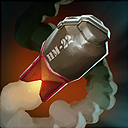 Homing Missile
Homing Missile is a bit useless though, one point on it until level 23 is enough as the enemies can easily destroy the rocket.
 Flak Cannon
Flak Cannon is still good even though it has been nerfed, it's also perfect for farming the ancient camp you should have stacked with the Helm of the Dominator. Talking about teamfights, Flak plus Barrage plus
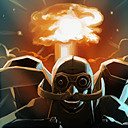 Call Down
Call Down deal huge AoE damage: they are enough to kill all the supports and leave little health to the enemy carry, unless the enemies counter-initiate or initiate first.
A team focused on pushing is never complete without a
 Juggernaut
Juggernaut: he's recently being played as a mid laner with Drums and Agh's, but his killing potential in aggressive trilanes is huge as always.
 Blade Fury
Blade Fury can easily kill any enemy and only needs one setup stun: it even grants magic immunity so you can't be stopped!
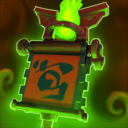 Healing Ward
Healing Ward is arguably the best skill for pushing because it keeps the momentum going and stops counterpush attempts, so it should be maxed out by level 9 or 10;
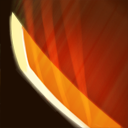 Blade Dance
Blade Dance is awesome but needs a few damage items in order to be effective, that's why you max it after the other abilities.
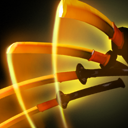 Omnislash
Omnislash is an amazing initiation tool and deals huge damage the less targets there are, so never use it when enemy creeps are nearby! Remember though that Ghost Scepters, Force Staffs and any forms of invisibility stop it istantly, so be careful.
Admiral
 Kunkka
Kunkka is only played in aggressive trilanes: he's been very effective so far, especially with Shadow Demon and Keeper of the Light in the same lane. His
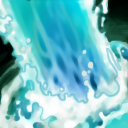 Torrent
Torrent is an excellent spell if used after a setup disable, Shadow Demon's Disruption in particular, and if the other support can follow up with either another disable or big nukes, then you're going to have a good time in the hard lane.
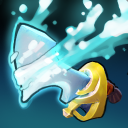 Tidebringer
Tidebringer will annoy the hell out of the enemy carry and make their health drop;
 X Marks the Spot
X Marks the Spot can be used when the laning phase has already ended as a self-setup for the
 Torrent
Torrent or a counter to Town Portal Scrolls. His ultimate, Ghost Ship, is a bit tricky to land but offers amazing results in big teamfights, especially because the AoE stun goes through Black King Bar. As opposed to what the majority of players believe, a quick Shadow Blade is not recommended: building survivability on such a Hero is better than going for quick damage because the more time he stays into the fight the more
 Tidebringer
Tidebringers he can hit; his low HP regen and poor INT gain also make Urn and Drums very appealing.
This is the other first-ban carry,
 Lifestealer
Lifestealer: most of his power comes from
 Rage
Rage, a skill that makes you magic immune and increases your DPS, too; he can also lifesteal thanks to
 Feast
Feast and initiate ganks with
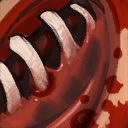 Open Wounds
Open Wounds, a very useful ability even after the big nerf. Don't forget about
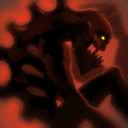 Infest
Infest, too: when infesting an allied Hero that can jump into the fight (Nyx Assassin, Clockwerk, Storm Spirit, Puck, Queen of Pain...), good initiations are ensured! You can also use this skill to hide from the enemy when you get caught or just replenish you health after/during a teamfight by infesting and quickly consuming a creep. If you're wondering about the item progression, depending on the situation Sange and Yasha can be substituted with Orchid Malevolence (against slippery carries like Weaver or annoying initiators like Storm Spirit), Desolator (when you are fed and just want to 2-shot supports or you want to push faster) or Skull Basher (when you need to stop the enemy carry), since SnY should only be picked when your damage is already high and you need something to chase better, as the damage increase is minimal. Always remember that Lifestealer is a very adaptable Hero, and so is his post-core item build.
After being played for a lot of time as a solo laner, now that
 Lone Druid
Lone Druid's Bear gives a lot of money on death he is commonly babysat in the safe lane with two supports: as soon as you max-out your
 Summon Spirit Bear
Summon Spirit Bear ability, pushing towers with Rabid and
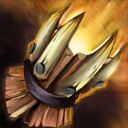 Battle Cry
Battle Cry (a subskill while in
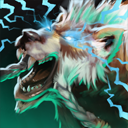 True Form
True Form) will be very easy even without items, especially with full points in Synergy. Also, always remember to give the damage items to the Bear! Provided your first skill is off cooldown, you can send it to push towers without any risks but a little amount of damage if the Bear dies. Also, a pretty unhortodox but effective strategy is to buy two Skull Bashers (one on the Bear and one on the Druid) to fight an unkillable carry: by doing so, the entangles (from the Bear) and bashes will most likely get them killed if you manage to get within melee range with the Druid, too. Another very common item is Radiance: get it on the Bear if you can afford it by ~25 minutes, so that you can split push simply by sending the Bear with the aura on the lane you want to push.
 Luna
Luna was a very popular carry in early 2013, when AoE autoattacks and teamfight ultimates were very popular. After a year or so, when the 6.79 patch came out people started picking Her again: even though se has low HP eraly on, her
 Lucent Beam
Lucent Beam has enormous range and deals a good amount of damage, while
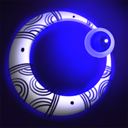 Lunar Blessing
Lunar Blessing helps in last-hitting better and adds damage to the whole team;
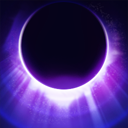 Eclipse
Eclipse, if used with no enemy creeps nearby, deals a lot of damage and is a perfect follow-up for initiations like Puck's Dream Coil, Disruptor's Kinetic Field or Treant Protector's Overgrowth. Moon Glaive is very noticeable in teamfights and helps in killing the ancient camps a support should've stacked; feel free to pick a Helm of the Dominator if you want to stack them by yourself.
 Morphling
Morphling still has the power to become a good carry, but he needs early farm in order to be effective: about the item build, going Boots of Speed into Linken's Sphere is very common if you're free farming, but the Ethereal Blade is definitely a priority if you want a higher impact in the mid game. Talking about his skills,
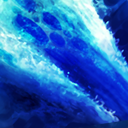 Waveform
Waveform and Morph Agility Gain must be maxed out by level 8-9 since the former is a very powerful AoE nuke and mobility tool while the latter not only makes you able to increase your agility or strength but also adds stats the more points you put in it. Replicate is a very underestimated skill in pubs which can be used to do many things: have a free teleport to the lane right after you TP to base, stack ancients and then teleport to them, use it as an escape mechanism or bait in teamfights and so on.
 Adaptive Strike
Adaptive Strike is just a common nuke that should be used to one-shot enemies right after the Ethereal Blade active (this strategy is usually called "shotgun Morph") and, if that isn't enough, finish them with
 Waveform
Waveform! Also, remember that all of his skills can be used as an escape mechanism:
 Waveform
Waveform can help you escape on the high ground,
 Adaptive Strike
Adaptive Strike can stun an enemy chaser, Morph Agility Gain makes you super tanky and impossible to kill and Replicate is, of course, an easy way to quit a teamfight.
Even though many people still think that
 Phantom Lancer
Phantom Lancer is too strong, after his period of popularity this Hero disappeared. Still, as long as your farm in the first 15 minutes goes well, an army of pushing PLs with Drum of Endurance and Diffusal blade is very difficult to stop, especially when playing in a pushing-oriented team; the real problem, now, is having sustainability without Tranquil Boots: some players like getting a Ring of Health, others prefer a Morbid Mask and others also take a full Vanguard instead of the Drums. Maxing out
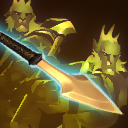 Spirit Lance
Spirit Lance is your main priority since the nuke damage is pretty high, while one level of Doppelwalk, even though it costs a lot of mana, is enough until level 12; having early levels of
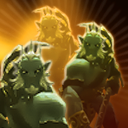 Juxtapose
Juxtapose makes your pushes very difficult to stop and Phantom Edge improves your pushing power even more and adds some needed magic resistance. As soon as you get the Heart of Tarrasque you'll be a dangerous threat for everyone: considering that your illusions will be very tanky you can simply farm and send them to push the lane with good results and a higher gold income. Probably, he's currently not popular because of Gyrocopter and some other Heroes who could deal with him and farm faster (Anti-Mage and Alchemist, mainly), while at the same time his laning phase is easy to stop.
 Spectre
Spectre is probably the hard carry with the least impact in the early game: her
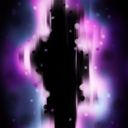 Spectral Dagger
Spectral Dagger consumes too much mana and deals little damage, while the other skills don't help in killing unless the enemy is alone. On the other side, the Dagger is a valid escape mechanism and, like Void's Backtrack, can be used to reach the Dire ancient camp from the Radiant jungle when farming. A very handy thing about
 Spectre
Spectre is that her ultimate,
 Haunt
Haunt, is perfect for jumping into teamfights: you can let your team force a fight when you're farming on your own then, as soon as they encounter the enemies, pop your ultimate, jump in and get as many kills as possible.
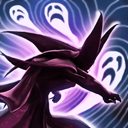 Desolate
Desolate is so good that many players prefer maxing it even before the Dagger, while
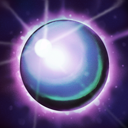 Dispersion
Dispersion is one of the most dangerous skills for melee Heroes especially after you finish the Heart of Tarrasque. Some players still try to rush a Radiance and it's a nice strategy but, unless you're sure you will have enough free farm to do so, don't try to do that: you will be going to split push and will use
 Haunt
Haunt in a defensive way many times, leaving you without a very powerful initiation when teamfights occur and, unless the split push and flash farm show their results, lose them.
Talking about hard carries,
 Tiny
Tiny is a very powerful one: he's not very popular because he needs as much gold as Anti-Mage but farms a lot more slowly, but when he gets his items he's really threatening. As soon as you get an Aghanim's Scepter pushing towers will be super easy; you can even use
 Toss
Toss to give the final hit. When you get Yasha and Crystalys, components of the bigger items, your already high damage will receive huge improvements for a relatively cheap price and you will be able to hit like a truck! A Drum of Endurance gives you enough mid-game presence to be able to solo kill Heroes with
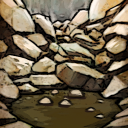 Avalanche
Avalanche plus
 Toss
Toss (always use
 Avalanche
Avalanche first!) and Phase Boots, coupled with the movement speed increase of Drums and Yasha plus your third level of Grow!, will give you close to max movement speed. Do the enemies have a super strong carry? As long as they don't have a Black King Bar, your
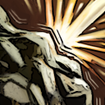 Craggy Exterior
Craggy Exterior will automatically stun them giving you a higher chance to win.
 Weaver
Weaver is a decent Hero who can deal with some of the most annoying carries: his
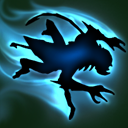 Shukuchi
Shukuchi makes him able to escape from dangerous situations and, at the same time, lets him kite some of the most dangerous close-range carries like Lifestealer, who is directly countered by
 Weaver
Weaver. He also has plenty of armor-reducing potential since
 The Swarm
The Swarm can target multiple Heroes and stacks with Desolator or Assault Cuirass and he's almost immune to Dust since his ultimate,
 Time Lapse
Time Lapse, can be used to remove all the debuffs on him. Lastly,
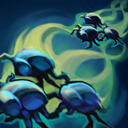 Geminate Attack
Geminate Attack improves his damage even more and can help in dealing the killing blow. Remember that orbs do stack with it, but only the first autoattack will be affected by the orb.
2.3 Items: support
Which pair of Boots does your support need? This is entirely dependent on your playing style and the situation, but it's possible to make a quick list regarding the most common things to remember when buying Boots:
 Boots of Speed should be your favourite choice of Boots because of their cheap price: if your Hero doesn't need mana from the Arcanes, keep your naked boots and maybe upgrade them when (and if) you reach the late stages of the game. Remember that a support is always in need of gold because of Wards, Gems, Smoke and stuff like that, so save as much money as you can! The movement speed given by the Boots of Speed is enough.
Boots of Speed should be your favourite choice of Boots because of their cheap price: if your Hero doesn't need mana from the Arcanes, keep your naked boots and maybe upgrade them when (and if) you reach the late stages of the game. Remember that a support is always in need of gold because of Wards, Gems, Smoke and stuff like that, so save as much money as you can! The movement speed given by the Boots of Speed is enough.
 Arcane Boots are a very common choice on non-INT Heroes and on supports that usually spam spells or simply waste a lot of mana when casting abilities: Nyx Assassin and Rubick are the most common examples. The first one always needs mana because of his slow mana pool, the second one wastes a lot of mana points even though is an Intelligence Hero. Supports like Leshrac and Skywrath Mage, who spam a lot, benefit from them too and can't live without a costant supply of mana.
Arcane Boots are a very common choice on non-INT Heroes and on supports that usually spam spells or simply waste a lot of mana when casting abilities: Nyx Assassin and Rubick are the most common examples. The first one always needs mana because of his slow mana pool, the second one wastes a lot of mana points even though is an Intelligence Hero. Supports like Leshrac and Skywrath Mage, who spam a lot, benefit from them too and can't live without a costant supply of mana.
 Phase Boots are a very rare choice, as most support players that don't need mana tend to keep their Boots of Speed as said before. Still, they're pretty decent for Crystal Maiden, who needs the mobility from the Boots as her movement speed is pitful, and can help a lot those Heroes that either roam very effectively or need to have perfect positioning for their abilities: Vengeful Spirit and Abaddon are good examples.
Phase Boots are a very rare choice, as most support players that don't need mana tend to keep their Boots of Speed as said before. Still, they're pretty decent for Crystal Maiden, who needs the mobility from the Boots as her movement speed is pitful, and can help a lot those Heroes that either roam very effectively or need to have perfect positioning for their abilities: Vengeful Spirit and Abaddon are good examples.
 Tranquil Boots became much more common after the rework and can be picked on ganking supports that benefit a lot from the movement speed to land long-range disables (Lion, Crystal Maiden...). You can no longer disassemble them to finish your Headdress or Force Staff and keep the Boots of Speed for the rest of the match, but they should be good enough at all stages of the game anyway since their movement speed (when not broken) is the highest in the game.
Tranquil Boots became much more common after the rework and can be picked on ganking supports that benefit a lot from the movement speed to land long-range disables (Lion, Crystal Maiden...). You can no longer disassemble them to finish your Headdress or Force Staff and keep the Boots of Speed for the rest of the match, but they should be good enough at all stages of the game anyway since their movement speed (when not broken) is the highest in the game.
Bracer

Heroes who can buy it:
depending on the situation, every support
A very cost-efficient item that should never be forgotten is the
 Bracer
Bracer: health points, mana and armor all for a mere 525 gold; even if the stats increase doesn't seem much it really does its job when your team's losing. A common strategy used by almost every high level support is to stack
 Bracer
Bracers if your team is losing hard: as long as you buy Wards and Bracers, you can be helpful and feed less than usual.
Dust of Appearance

Heroes who can buy it:
every support
When you are fighting those Heroes that use their invisibility as an escape mechanism, carrying some
 Dust of Appearance
Dust of Appearance is very helpful: now that it reduces the movement speed of your targets too, chasing Shadow Blade carriers or Heroes like Bounty Hunter and Riki becomes super easy; against Heroes like Nyx Assassin and Clinkz, though, Sentry Wards are better until you get enough money for a Gem of True Sight. Always carry some Dust with you when your team can't kill a particulat Hero because of their invisibility.
Gem of True Sight

Heroes who can buy it:
every support
The Gem of True sight is an essential item when you're up against Heroes that use their invisibility to gank, especially the popular Nyx Assassin: most of the time you want your team's most durable Hero to pick it (as it drops on death), so don't keep it for yourself and leave it on the courier or into the fountain. Remember that the Gem can't be denied anymore, so don't let the enemy team kill the Gem holder!
Hand of Midas

Heroes who can buy it:
depending on the situation, every support
What? A farming item on supports? Why? Actually, after the 6.79 patch, since the gold per second has been increased supports can take this to actually improve their efficiency: many Crystal Maiden or Venomancer players like getting it by ~15-20 minutes since the 250 extra gold covers your needs in terms of warding and TP scrolls while, at the same time, brings you closer to a big item such as Aghanim's Scepter or Scythe of Vyse, that are not that rare on supports anymore. The main thing to remember about this item is that if your team needs a Mekansm or another item like that you should
always prioritize it.
After the 6.80 patch, this item is no longer used on supports: the gold increase made an already overestimated item too expensive to be of any use.
Magic Wand

Heroes who can build it:
every support
A
 Magic Wand
Magic Wand is one of the best items for a support: its low price and cheap components make it very easy to build and, as it gives both stats and a reliable source of burst mana and HP, nobody should ever forget about it (especially because a lot of times you would start with Iron Branches which can be used to build the Wand). The only Heroes who could skip it are those supports that usually build a Mekansm, but a Magic Stick is still suggested for them.
Other than being very popular on Visage, this item is also known for making early Roshan fights a lot easier: if your team has a costant supply of health points (an early Vladmir's Offering, a Healing Ward...) a fast
 Medallion of Courage
Medallion of Courage makes Roshan kills much quicker which mean more experience and gold for your team. If this is the case, don't be afraid to buy it even on Heroes like Nyx Assassin or Rubick and make every armor reduction debuff count in teamfights, too: when the BKB immunity of the enemy carry finishes reduce their armor and do your best to ensure the kill. Otherwise you can use the active ability to make ganks easier, especially when helping Heroes with skills that rely on physical damage like Nyx Assassin's Vendetta or Templar Assassin's Meld.
This item was always considered one of the best things to build on a support but, since the meta has changed and it wouldn't take less than ~20-25 minutes for a support to complete it, players have started picking it on off-laners or even some carries (Viper, Outworld Devourer, Razor...) to have an early window of advantage. Still, as this item isn't effective on many off-laners, some supports can build it as they always did: mostly on ranged Heroes, the stats increase and HP regen aura give a lot of survivability improvements for their price, especially because this item has one of the best active abilities too. A team without a
 Mekansm
Mekansm will be much less powerful in early-mid teamfights, so never forget to buy it.
Smoke of Deceit

Heroes who can buy it:
every support
The
 Smoke of Deceit
Smoke of Deceit is a very underrated item in pubs: it looks like a waste of gold but, if you think about it, 100 gold isn't much and, as that could be the only way to make a gank possible, the gold gained by a succesful gank is more than enough to make it worth its price. When you activate your Smoke always be sure not to be spotted by an enemy Observer Ward: if that is the case, smart players will play very conservatively for two minutes making you waste your gold; for the same reason don't pick up runes while you're smoked, as a nearby Ward is enough for a careful player to guess what's happening. High level players use this item a lot for ganking the mid laner early on, especially when that Hero is crucial for the strategy of the enemy team; the
 Smoke of Deceit
Smoke of Deceit is also used in the mid-late game for either ganking with a Hero that can easily pick off targets and force a fight (Batrider mainly), making something happen with a five-men Smoke when your team's losing or backdooring when the enemies don't expect it.
The
 Urn of Shadows
Urn of Shadows is one of the most common items for supports: two Gauntlets of Strength give as much survivability as a Bracer and the Sage's Mask helps a lot of Heroes who tend to spam spells or simply have a small mana pool, especially Leshrac and Shadow Demon. Other Heroes get this item because of their ganking potential (Io and Nyx Assassin being on top of the list), but the main purpose of the Urn doesn't change: its heal is very noticeable in the early-mid game and creeps can't stop it, and if you accumulate charges it can still be helpful when you reach the late game.
Wards


Heroes who can buy them:
every support
When supporting, never forget about Wards: the more you place, the bigger the advantage of your team.
 Observer Ward
Observer Wards should be bought any time they're off cooldown and should be placed in different positions depending on the number of towers that are still up and on your strategy: placing one that covers a rune spot is always manadatory for the first 6 minutes at least; putting one on the high ground of the mid lane is very helpful against Heroes who tend to spam their long range nukes or have dangerous abilities like Magnus and Pudge. As you start picking towers you should place them in different positions for ganing the highest advantage you can. Another common strategy is to place one that blocks the creep pull camp when playing in an aggressive trilane, since it would deny a lot of experience which is already split in 3 Heroes. Sentry Wards should be bought every game, it doesn't matter if the enemies are using invisible Heroes or not: of course you will need them for countering those wards that block your creep pulling camp, but they're also vital for
dewarding. Dewarding, especially when the game has just started, gives you a lot of advantage as it makes your enemies waste Wards until they're out of stock: always remember to try to deward before fighting Roshan, or the enemies will probably spot you.
Useful Links:
The Eye of the Wolf - Seeing is Believing, or Rape;
DotaCinema's Guide to Basic Warding.
2.4 Items: carry
Every carry needs to buy damage items in order to be effective, but the order and the situation make the choice sometimes difficult: here's a quick list that shows what you have to buy in that particular situation.
 Manta Style is a very common items on some AGI carries: it's essential for Anti-Mage, Juggernaut, Luna, Phantom Lancer and Tiny and is a nice post-core item for Chaos Knight, Naga Siren, Spectre and Weaver. But sometimes you'll have to build it even on STR Heroes: if the enemies have a persistent silence or damage-over-time ability that always gets you killed, as the active from
Manta Style is a very common items on some AGI carries: it's essential for Anti-Mage, Juggernaut, Luna, Phantom Lancer and Tiny and is a nice post-core item for Chaos Knight, Naga Siren, Spectre and Weaver. But sometimes you'll have to build it even on STR Heroes: if the enemies have a persistent silence or damage-over-time ability that always gets you killed, as the active from  Manta Style purges all the debuffs (including Dust of Appearance and silence but not the disarm) don't be afraid to buy it on Lifestealer or Alchemist. Never get it on Heroes with hit-based damage like Gyrocopter (Flak Cannon) or Ember Spirit (Sleight of Fist): if you need more early damage because you got fed go for a Shadow Blade instead.
Manta Style purges all the debuffs (including Dust of Appearance and silence but not the disarm) don't be afraid to buy it on Lifestealer or Alchemist. Never get it on Heroes with hit-based damage like Gyrocopter (Flak Cannon) or Ember Spirit (Sleight of Fist): if you need more early damage because you got fed go for a Shadow Blade instead.
 Butterfly is a late-game item for any AGI Hero: generally, you want to buy this item as soon as you finish your core (including a possible Heart of Tarrasque) and if the enemies don't have a Hero with evasion so you don't need a Monkey King Bar. Don't buy it on STR carries, it's a stupid idea.
Butterfly is a late-game item for any AGI Hero: generally, you want to buy this item as soon as you finish your core (including a possible Heart of Tarrasque) and if the enemies don't have a Hero with evasion so you don't need a Monkey King Bar. Don't buy it on STR carries, it's a stupid idea.
- A
 Monkey King Bar is generally the other post-core item you should always be looking for: if one of the enemies is already building an item that gives evasion, forget about your Butterfly (if you're an AGI Hero) and go for a straight MKB. The mini-stuns are also useful for stopping channelling abilities, including TP scrolls.
Monkey King Bar is generally the other post-core item you should always be looking for: if one of the enemies is already building an item that gives evasion, forget about your Butterfly (if you're an AGI Hero) and go for a straight MKB. The mini-stuns are also useful for stopping channelling abilities, including TP scrolls.
 Diffusal Blade is a good pickup only on specific Heroes: they usually have illusions that benefit a lot from its mana drain (Phantom Lancer) or just focus on solo ganking (Riki). Don't forget to buy its recipe two times, so that the stats increase and mana burn are higher.
Diffusal Blade is a good pickup only on specific Heroes: they usually have illusions that benefit a lot from its mana drain (Phantom Lancer) or just focus on solo ganking (Riki). Don't forget to buy its recipe two times, so that the stats increase and mana burn are higher.
 Abyssal Blade is a pretty situational item but, since all the STR carries are melee, they usually buy it or even keep the Skull Basher without upgrading it; it's also useful for Anti-Mage and other AGI Heroes with no crowd control abilities. If it looks like you can't stop the enemy carry, prioritize this item over stuff like Butterfly.
Abyssal Blade is a pretty situational item but, since all the STR carries are melee, they usually buy it or even keep the Skull Basher without upgrading it; it's also useful for Anti-Mage and other AGI Heroes with no crowd control abilities. If it looks like you can't stop the enemy carry, prioritize this item over stuff like Butterfly.
- The
 Shadow Blade is a very situational pickup on the majority of Heroes: aside from being core on Alchemist, many players that get fed early on opt for an SB on Heroes like Gyrocopter and Juggernaut who, when getting very close to the enemy, can kill them in a matter of seconds. Still, if you can't get it by ~12 minutes you should skip it.
Shadow Blade is a very situational pickup on the majority of Heroes: aside from being core on Alchemist, many players that get fed early on opt for an SB on Heroes like Gyrocopter and Juggernaut who, when getting very close to the enemy, can kill them in a matter of seconds. Still, if you can't get it by ~12 minutes you should skip it.
 Daedalus,
Daedalus,  Desolator,
Desolator,  Sange and Yasha and
Sange and Yasha and  Orchid Malevolence are some semi-common carry items: they are either situational or a sixth-pick (which means you usually sell your farming item for buying them) item. The
Orchid Malevolence are some semi-common carry items: they are either situational or a sixth-pick (which means you usually sell your farming item for buying them) item. The  Desolator can be useful if you're fed and want to push better and kill supports in two hits, the
Desolator can be useful if you're fed and want to push better and kill supports in two hits, the  Orchid Malevolence is very uncommon but does its job against dangerous teamfighters like Magnus or Heroes difficult to kill such as Puck and Weaver and
Orchid Malevolence is very uncommon but does its job against dangerous teamfighters like Magnus or Heroes difficult to kill such as Puck and Weaver and  Sange and Yasha are the best chasing tools of the game, even though they give little to no improvements to your damage.
Sange and Yasha are the best chasing tools of the game, even though they give little to no improvements to your damage.  Daedalus is simply a super-late game item or a pickup for those Heroes that deal cleave damage like Kunkka and Battle Fury-holders.
Daedalus is simply a super-late game item or a pickup for those Heroes that deal cleave damage like Kunkka and Battle Fury-holders.
Good farming is essential to start better than the enemy carry and win the game: some Heroes need items to do it faster (and so they require early free farm) and some others can occasionally pick an item to improve their net worth and gold when getting good farm early on. If you want to know more about the Heroes who need those items and the time it should usually take to complete them before they become useless, follow this list:
 Battle Fury: 16-17 minutes or below on
Battle Fury: 16-17 minutes or below on

 and, situationally,
and, situationally,

 Radiance: 22 minutes on
Radiance: 22 minutes on
 and, situationally,
and, situationally,

 Hand of Midas: 8 minutes or below on, situationally,
Hand of Midas: 8 minutes or below on, situationally,





 Maelstrom, on the contrary, is no longer used to farm: it was quite popular on Nature's Prophet and Alchemist too, but people realized that, unless you have to deal AoE damage for killing illusions, a Hand of Midas is always better. Still, it can be a fist pick on
Maelstrom, on the contrary, is no longer used to farm: it was quite popular on Nature's Prophet and Alchemist too, but people realized that, unless you have to deal AoE damage for killing illusions, a Hand of Midas is always better. Still, it can be a fist pick on  Alchemist if below 12 minutes.
Alchemist if below 12 minutes.
Remember that if 16 minutes have passed, as long as you have good farm and already a big part of your
 Battle Fury
Battle Fury you can still manage to buy it in, let's say, 18 minutes and make good use of it. This applies to the
 Radiance
Radiance too, but not to the
 Hand of Midas
Hand of Midas.
 Black King Bar
Black King Bar is the first big pickup for a lot of carries: since the current meta is focused on teamfights, having a carry that gets instantly nuked down or chainstunned is useless; so, unless your team's carry has to build tanky items like Phantom Lancer and Spectre, it should never be skipped. Remember, though, that a lot of spells go through BKB! That's why Bane is a top tier support: his Fiend's Grip, along with Black Hole, Overgrowth, Primal Roar, Reverse Polarity and some other uncommon spells, still disables the target even though it doesn't deal damage. When building a
 Black King Bar
Black King Bar always start from the Ogre Club: survivability is more useful than damage early on.
The
 Drum of Endurance
Drum of Endurance deserves a special mention for being the most used item: as it's made from cheap components and comes with an aura, an active ability and more movement and attack speed, it's really worth its price. Especially on Heroes that need early advantage or want a survivability item before going for big items, the Drums are a perfect choice: they cost a lot less than a Vanguard and work as an offensive item too, since the active ability is even better than the damage block! Never underestimate or skip this item.
This item has only one purpose: stacking ancients. If you buy an early
 Helm of the Dominator
Helm of the Dominator, you always do so to make a tri or quad stack and farm it with an AoE autoattack item/ability (Battle Fury, Flak Cannon, Moon Glaive...) as the lifesteal is minimal early on. The survivability given by the Helm of Iron Will is quite nice and the lifesteal will be very useful after you buy some damage items; remember that it's also a component for the Satanic, so never sell it.
Even on carries,
 Magic Wand
Magic Wands are very effective: obviously buy them as soon as possible when playing a trilane vs trilane matchup and, if playing 3vs1, don't be afraid to get a Wand if the off-laner tends to spam abilities or if you're going to force early teamfights, especially on Heroes like Gyrocopter or Lifestealer. If you're playing an afk farming Hero like Morphling a Magic Stick is usually enough until you complete your first big item, after which you either sell it or complete the
 Magic Wand
Magic Wand.
Talking about the Rings, they are occasionally picked up by some carries: a
 Ring of Basilius
Ring of Basilius is always mandatory for aggressive trilanes as 500 gold is a very cheap price for such an aura; the
 Ring of Aquila
Ring of Aquila is more like player's preference: some players like buying it and some others think it's a waste of gold. The
 Ring of Basilius
Ring of Basilius is a very common first item for carries such as Gyrocopter, Luna, Phantom Lancer and Weaver; the
 Ring of Aquila
Ring of Aquila is used a lot on Morphling and Naga Siren but is built on Gyrocopter, Luna and Weaver quite often, too.
3. SAFE TRILANES
When talking about trilanes people often refer to them as safe or aggressive: the first one focuses exclusively on letting the carry farm, leaving to the supports all the time they need to ward, stack, pull and gank. Furthermore, safe trilanes may have different purposes depending on their supports: either they are made to take advantage of the 3vs1 situations and feature two supports that can easily gank the mid and off-laner, or they just comprehend two supports that maximize the safety of the carry (usually called "turtling" supports, as turtling is a strategy that focuses on 4 Heroes defending the hard carry for ~20 minutes and let him get enough items to be a threat).
Safe trilanes can have a very high impact in the early game: if the supports pull out nice ganks and the carry manages to get a lot of free farm, the rest of the game will be way easier. In these situations the two supports need to secure the farm of the carry by zoning out the enemies and creep pulling for easier last-hits; ganking the other lanes is a very important thing too. In the following chapter I will not only talk about the main jobs a trilane support has to follow, but explain everything you can do while you don't have to interfer with your carry's farm and yet you have a lot of spare time because of very passive off-laners or solo laners that start in the jungle.
3.1 Differences between a pub babysitter and a trilane support

If you come from a pub, forget everything you've learnt that's trictly referred to dual lanes: don't stay near the carry so he doesn't get hit, don't stay in the experience range just for denying creeps, don't sit in your lane when the enemies are backing up. There are, though, some things that you should still do like warding, not getting gold from lane creeps, dying for your carry or for killing the enemy carry and so on; the following list might help you out:
 Gold
Gold
You get gold by killing the neutral creeps from the medium camp you should be pulling. Most of the time you don't even need so much gold to be a good support: two sets of
 Observer Ward
Observer Wards and a pair of
 Boots of Speed
Boots of Speed are usually enough for the first 10-15 minutes; for the rest of the early game you can get gold by ganking or, theoretically speaking, investing in
 Sentry Ward
Sentry Wards for destroying enemy
 Observer Ward
Observer Wards.
 Experience
Experience
I bet a lot of pub supports become shocked when they see a competitive match with a level 7 carry and two level 3-4 supports in the safe lane (and, maybe, for that reason they refuse to trilane in pubs); in fact, you need little to no experience to be a good support: the levels you get by creep pulling are enough to pull off decent smoke ganks with your support partner (level 2-3 is usually ok for ganking with most of the supports) and, if you manage to snowball, you can get a lot of experience by ganking and roaming while letting your carry get their space.
 Items
Items
You should already know this, but I'll repat it just in case: supports
don't need items, you can play a perfect match with just
 Boots of Speed
Boots of Speed and
 Observer Ward
Observer Wards; of course items like
 Magic Wand
Magic Wand and
 Bracer
Bracer are very useful, but as long as you ward and are active in ganks or teamfights you're already doing more than enough. Usually, supports get their
 Arcane Boots
Arcane Boots or plain Boots + Urn/Buckler by 10-15 minutes; a complete
 Mekansm
Mekansm is expected to be completed by not less than 20-25 minutes. Just remember that Wards and TP Scrolls are more important than any other item for your team, so prioritize them.
3.2 Good positioning: zoning out and ganking your own lane
Positioning is one of the most important things and yet one of the most difficult techniques to achieve: according to the enemy laner(s), your team's carry and the two supports, the correct positioning for a support Hero may vary. For example, if your trilane consists of a  Gyrocopter -
Gyrocopter -  Nyx Assassin -
Nyx Assassin -  Shadow Demon lineup you'd better aim for kills and come from behind while Gyro is farming; on the other side, if you are playing a
Shadow Demon lineup you'd better aim for kills and come from behind while Gyro is farming; on the other side, if you are playing a  Spectre -
Spectre -  Treant Protector -
Treant Protector -  Keeper of the Light trilane being able to push the off-laner away from the creep wave is fundamental for letting
Keeper of the Light trilane being able to push the off-laner away from the creep wave is fundamental for letting  Spectre get enough early farm to afford a quick
Spectre get enough early farm to afford a quick  Radiance or Drums + Diffusal.
Radiance or Drums + Diffusal.
Still, there are some common tips that every trilane support should know:
- Stay away from the experience range as much as possible: you don't want to steal farm and experience from your carry and make him weaker than the enemy;
- Don't be afraid to come into the lane when there's a ganking opportunity: early kills (expecially first blood) are very useful for getting an early advantage. If you don't get the kill, then don't discourage: a kill attempt is worth all the mana you spend in doing it;
- Always try to let the carry get the last-hits on the enemy Heroes (but don't be afraid to kill them by yourself if they're not disabled): you can try to body block the enemy if the carry is far from them;
- Be active on the other lanes, too! Always carry a
 Town Portal Scroll and go to roam when your team's carry is farming safely.
Town Portal Scroll and go to roam when your team's carry is farming safely.
|
If you still don't understand well the concept of trilane support, watch some matches from high level tournaments: they teach you a lot of things. For example, always stay behind the trees and not in the lane when supporting, so that the enemy doesn't know wether you're right near the carry or behind the trees to perform a kill attempt. Remember also that trilane gank attempts are worth more than splitting the carry's experience in three: a good amount of experience and gold can be got by creep pulling, the rest comes with succesful ganks, tower pushes or teleports to defend other lanes. |
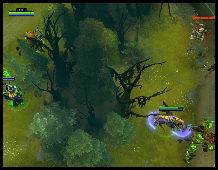
|
 |
You don't have to be extremely far from the creep experience range to zone out the enemy laner: harassing them with two supports in lane will surely make them run back to their tower and stay there until the next enemy creep wave comes, so that you can stack and pull the creep camps right after you push the off-laner back.
Or, alternatively, you can try to come from behind and attempt a level 1 kill: this is a very common maneuver in low-level captains mode matches, and I can assure you it always works with two supports with very strong level 1 skills. Especially when you get a lucky rune, level 1 first bloods should be always tried.
|
|
Still, since not everyone is so dumb they purposely get in the middle of a trilane, knowing how to zone out is very useful and, if done at the right moment (for example when the off-laner's TP Scroll is either on cooldown or too expensive for them, so they have to come back in the lane on foot) can open several options for the supports: smoke ganking the mid lane and warding/dewarding are very common things a support can do in these situations; pushing the lane to get early gold and experience is also nice if the carry is already level 5-6. |
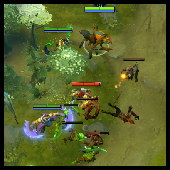
|
Talking about lane ganks, getting trilane kills is very easy: if the enemy positioning is really bad, two supports that synergize well with each other are more than enough to disable or nuke down the off-laner (which, if you did your job, should be underlevelled) and let the carry get the final hit or, at least, an assist. Just come from behind the treeline (maybe place an
 Observer Ward
Observer Ward in the enemy off-lane) and catch the enemy between the supports and the carry. Unless they have a major escape mechanism (invisibility and you have no detection, cogs, blinks/jumps between the trees...), they are 100% dead; you can still kill them before they manage to escape with their skills, too.
3.3 Creep pulling: different ways to pull and stack
Creep pulling is a fundamental part of a trilane: without the experience they get by creep pulling, the supports would be terribly underlevelled for a big part of the match; at the same time, a double-stacked pull prevents the enemy from getting experience and gold from that creep wave and grants safe last hits under the tower for your team's carry.
Never single pull
A lot of pub supports mistakenly pull a non-stacked camp to get quick experience and don't interfer too much with the safe lane: in fact, single pulling is bad for both the support(s) and the carry. A non-stacked camp has, of course, less neutral creeps than a double stacked one, so supports get less gold and experience; plus, as just one or two friendly creeps get killed, the remaining ones do go back into the lane and, when they reach the enemy creeps, another friendly creep wave is close to them and will reach the enemies before the "halved" friendly creep wave ends: this means that the lane will get pushed and, as the friendly creeps will probably reach the enemy tower, it grants safe farm for the enemy laner(s). So, basically, single pulling benefits the enemy a lot more than your own team. |
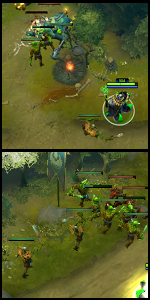
|
Checking if the creep pulling camp is blocked
If you expect the enemy to play an aggressive trilane, always be ready with a set of  Sentry Wards at the beginning of the match: not having a creep pulling camp means relying on roaming to get farm or, alternatively, splitting the carry's experience in three; if the creeps in the pulling camp don't spawn at 0:30, you can place a Ward for a miserable amount of gold (100) and deny 75 gold (the price of an Sentry Wards at the beginning of the match: not having a creep pulling camp means relying on roaming to get farm or, alternatively, splitting the carry's experience in three; if the creeps in the pulling camp don't spawn at 0:30, you can place a Ward for a miserable amount of gold (100) and deny 75 gold (the price of an  Observer Ward) to the enemy, remove the vision they have in your jungle and get easy gold and levels from neutrals. The other Observer Ward) to the enemy, remove the vision they have in your jungle and get easy gold and levels from neutrals. The other  Sentry Ward can be used to either deward near a rune spot or reveal invisible Heroes, especially if they're off-laning against your trilane. Sentry Ward can be used to either deward near a rune spot or reveal invisible Heroes, especially if they're off-laning against your trilane. |
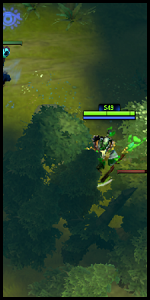
|
Double stacking
Every support has to know how to double stack if they want to play in a trilane: as said before, single pulls are useless, so always try to double or even triple stack a camp if you have enough time to do so. Stacking a camp is very easy, especially if you're a ranged Hero: your job is to draw the creep aggro of the pulling camp at X:53, then run away and make the creeps follow you; when they go back to their camp a new set of creeps should have spawned. You can double stack any camp, from jungle creeps to ancient camps, but it's a bit more difficult for the small jungle camp. |

|
Pulling a stacked camp
Creep pulls are very easy to make, too: stay near the creep camp, wait for X:16 or X:46 and draw the creep aggro: when they're following you, run into your lane so that the friendly creeps start to hit the neutral ones; sometimes, if you pull too later, you have to body block the friendly creeps. When the friendly creeps get into the neutral camp, you can freely hit the neutrals and time your autoattacks so you get some last-hits and gold: remember that all the friendly creeps have to get killed, so don't destroy the neutrals before they finish their job (most of the time you can "re-use" a camp without stacking it, too). Usually, in the Dire side the friendly creeps come a second earlier (X:16, X:46) than in the Radiant side (about X:17, X:47), but pulling at X:16 and X:46 should always work.
Nowadays this kind of pull is no longer reliable since the pulling camp is a small one: think about pulling through even if you have a double stacked camp that usually works (for example if you have at least one stack with Ghosts or Kobolds). |
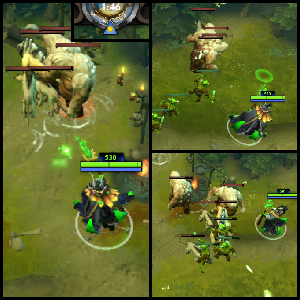
|
Double pulling single camps (AKA pulling through)
The double pulling is a difficult maneuver to perform and requires some knowledge of the neutral creeps: it all comes with experience. People usually do this if they don't have time to stack the camp. What you should do is eat a tree with a  Tango or Tango or  Quelling Blade if you're in the Radiant side, so that the creeps in the pulling camp can reach the ones in the medium camp right above it and vice versa (you don't have to do so if you're Dire, as you have to pull the hard camp to the creep pulling camp), then single pull and let the friendly creeps get in the small camp. Now, things can go either good or wrong according to your timing: you usually want to wait until the health of the creeps in the small camp is, summing it up, about 400 (there isn't a precise "time" on the clock, you have to watch the neutral creeps and their health), the draw the creep aggro of the medium (if you're Radiant) or hard (if you're Dire) camp and, if you need to, kill the last neutral creep of the pulling camp; now, your lane creeps should be following the neutrals from the other camp and you can safely finish them. If things go wrong and you miss the second pull (heck, that happens to high level players too!), it pushes your lane. But don't worry, you can still try again a minute later. Quelling Blade if you're in the Radiant side, so that the creeps in the pulling camp can reach the ones in the medium camp right above it and vice versa (you don't have to do so if you're Dire, as you have to pull the hard camp to the creep pulling camp), then single pull and let the friendly creeps get in the small camp. Now, things can go either good or wrong according to your timing: you usually want to wait until the health of the creeps in the small camp is, summing it up, about 400 (there isn't a precise "time" on the clock, you have to watch the neutral creeps and their health), the draw the creep aggro of the medium (if you're Radiant) or hard (if you're Dire) camp and, if you need to, kill the last neutral creep of the pulling camp; now, your lane creeps should be following the neutrals from the other camp and you can safely finish them. If things go wrong and you miss the second pull (heck, that happens to high level players too!), it pushes your lane. But don't worry, you can still try again a minute later. |
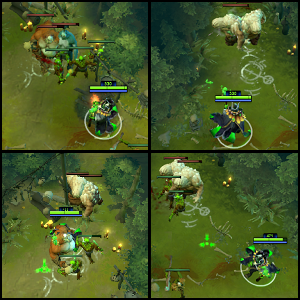
|
3.4 Smoke ganking: common paths and targets
First, when whould you need to smoke gank? When you trilane there are certain moments that make smoke ganks very appealing, especially when one or more of these situations occur:
- The off-laner is missing;
- The carry can control the lane without the need of your pulls;
- The mid lane is pushing to your tower and the mid laner has poor positioning;
- The enemy tower in their hard lane is getting pushed;
- Either you or your team's mid laner manage to get a good rune.
The
 Smoke of Deceit
Smoke of Deceit is a really useful item for granting good ganks to your team but, if used in a wrong way, it's just a waste of gold. Always remember to stay far from the common ward spots and to gank the other laner from behind or from the high ground. This screenshot shows the most common spots where players smoke (both from the Radiant and Dire side) and the place where competitive players set up their mid ganks:
Here's a quick list of the most common paths for smoke ganking both the mid and solo laner:
Why don't you gank the mid laner from the south while on the Radiant side? Because, even though it takes much less time, the Dire tower is able to reveal your Smoke: if the mid laner sees that a support is being attacked by the tower, especially in the first stages of the game, they could probably get an easy kill! Of course you might kill them too, but spending more time following a different path is better than having a 1 for 1 trade. The same thing applies for when you're on the Dire side and want to gank the Radiant mid laner, too.
3.5 Warding and dewarding: a quick guide
There are hundreds of guides about warding on the Internet, so I won't make a huge list: these seven warding and three dewarding spots are more than enough to start with for a newcomer; the rest of them can be found on guides like this one.
The following wards work well for both the Radiant and the Dire side:

Radiant defensive/Dire offensive wards:

Radiant offensive/Dire defensive wards:

Useful dewarding spots for both Radiant and Dire:

Remember to always take a set of
 Observer Ward
Observer Wards at the beginning of the game and put one of them on one of the rune spots: being able to control runes for the first 10 minutes (so you need two wards at least) is crucial for your team's mid laner.
When you finally push down some towers, having vision near the Rosh pit is so important: never leave that space without vision or the enemies might kill Roshan even before you realize they're there. Of course they might smoke to get into the pit and you won't see them, but in that case you can simply push the lanes instead of contesting the Aegis.
Defensive wards are also useful when you're back in farm and levels: if they can't control your jungle, you can make surprise ganks and gain some extra momentum that can become a pushing attempt or a succesful teamfight. For the same reason, offensive wards prevent your enemies from getting into their own jungle and grant you easy ganks, so that you can try to push to the barracks when your team has a number advantage.
Dewarding is also very important, especially early on: without the rune vision, the enemy mid laner will either have to gamble and hope to reach the right rune spot or just forget about runes as your mid laner will always take them. In the mid-late game, placing a
 Sentry Ward
Sentry Ward near Roshan should always reveal an enemy Ward or two. Also, when you see an enemy support walking to a common rune spot and then quickly go back, always assume they have placed a Ward and get some Sentries as soon as possible.
3.6 Extras: stacking, securing runes, etc.
While zoning out, creep pulling, smoke ganking and warding are fundamental for a trilane support, there are many other options for someone who has nothing to do in his lane: these actions are mainly executed for gaining early advantage or letting the carry get more farm.
Stacking jungle camps
While stacking the creep pulling camp is mandatory, you should stack the other camps if you have enough time to do so: when your carry reaches a higher level or get a major farming item (
 Battle Fury
Battle Fury?), the extra creeps will be very handy for him. For the same reason, if you see a stacked camp in the enemy jungle try to steal it with your teammates.
Stacking ancients
The ancient creeps are a very high source of farm at all stages of the game: getting a tri/quad stack out of them means a huge amount of quick gold, especially for those Heroes with AoE autoattacks (
 Flak Cannon
Flak Cannon, Moon Glaive,
 Battle Fury
Battle Fury,
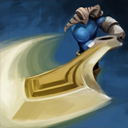 Great Cleave
Great Cleave...). Still, remember that the ancients are situated in very uncomfortable places (especially the Radiant ones, since wards on their hill are very common), so always keep an eye on your ancient camp and make sure the enemies won't steal them.
Securing runes for your mid laner
Mid laners are always looking to get the rune before the enemy: if you're lucky enough and the rune spawns close to you, you might want to stay in the surroundings to discourage the enemy from getting it. A recent strategy that high level players tried to use is to stay exactly on top of the rune, so that the enemies can't materially click on the rune without targeting you.
Semi-jungling with a support
Since most of the time you'll be fighting against a passive off-laner or even a solo laner that starts in the jungle, supports won't have to stay close to the creep wave so that the carry gets all the farm. In these situations, certain supports can use their skills to kill jungle creeps and get more gold than expected:
 Illuminate
Illuminate,
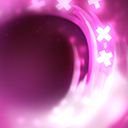 Shadow Wave
Shadow Wave and the majority of AoE nukes (
 Split Earth
Split Earth,
 Dragon Slave
Dragon Slave,
 Impale
Impale,
 Fade Bolt
Fade Bolt...) can be used to farm in the small camp getting little to no damage; other abilities like
 Frostbite
Frostbite and
 Cold Feet
Cold Feet are able to temporarily disable the strong creep in the big camp and make you able to kill it (very useful to get a quick level 2).
4. AGGRESSIVE TRILANES
Basically, playing an aggressive trilane means getting two carries and playing one of them in the hard lane with two supports (sharing experience with them), hoping to get kills and prevent the enemy carry from farming. If your aggressive trilane goes well you would end up with a farmed carry, another carry with a couple of kills, two supports with a decent level and an underlevelled enemy carry.
There are some things you should know if you want to play a good aggressive trilane: for example, if the enemies have better picks your trilane will do nothing but feed unless you play very conservatively; plus, getting kills is worthless if you don't push down the enemy towers in a small amount of time.
You should play an aggressive trilane when:
- The enemies have a hard carry the requires early farm;
- Your carry for the aggressive trilane doesn't require much farm or levels;
- You can pick another carry instead of an off-laner and play him 1vs1 in your safe lane;
- You have a better combination of Heroes than the enemies.
In other words, if the enemy team thinks they're invincible because a
 Phantom Lancer
Phantom Lancer made it through the first ban phase and they picked him, even a half-decent aggressive trilane will make them change their mind.
4.1 Differences between safe and aggressive trilane
First of all, the main difference between the two trilanes is where they're set and what their aims are: safe trilanes are played in the safe lane and focus on letting the carry get all the farm, creep pulling and maybe smoke ganking; aggressive trilanes are played in the hard lane and are used to stop the enemy farm, let a solo laning Hero get farm 1vs1 in the safe lane and get some kills which lead to early pushes. This list should evidentiate all the differences:
Safe trilane
- Used to let your team's carry get farm
- Your solo laner goes against a trilane and has to be careful
- Your carry gets all the experience
- Your supports can gank other lanes if they have time to do so
- Your supports can creep pull and stack any camp to get more advantage
- Your supports should focus on warding rune spots and ganking/counterganking paths
|
|
Aggressive trilane
- Used to prevent the enemy carry from getting farm
- Your solo laner goess 1vs1 against an off-laner and can get a lot of solo farm
- The experience gets shared between all the three Heroes
- Your supports should always look for a kill on the enemy trilane
- Your supports can only creep pull the dire hard camp from the Radiant hard lane
- Your supports should focus on warding rune spots and the enemy creep pulling camp
|
As the experience gets shared in three, don't panic if your trilane carry is underlevelled in comparison to the mid or solo laner: in this lineup, the trilane carry is more of a "bait" to keep the enemy busy in their trilane and let your team's supports get quick and easy levels.
4.2 Good positioning: always be ready to gank the enemy trilane
When talking about aggressive trilanes, positioning is less important: in this case kills and damage on the enemy carry are more beneficial than solo experience for your trilane carry, but don't forget you can stay out of the lane if you have to block a pulling camp or ward somewhere. Usually, aggressive trilanes have one initiator ( Shadow Demon,
Shadow Demon,  Rubick,
Rubick,  Earthshaker...) that stays far from the enemies but close enough to catch them when needed; another support that can chainstun the target (
Earthshaker...) that stays far from the enemies but close enough to catch them when needed; another support that can chainstun the target ( Lina,
Lina,  Leshrac...) or nuke him down (
Leshrac...) or nuke him down ( Keeper of the Light,
Keeper of the Light,  Skywrath Mage...) and a carry who either has a slow/disable (
Skywrath Mage...) and a carry who either has a slow/disable ( Lifestealer,
Lifestealer,  Sven...) or a nuke (
Sven...) or a nuke ( Gyrocopter,
Gyrocopter,  Juggernaut...). Try different combinations to discover the one you like more!
Juggernaut...). Try different combinations to discover the one you like more!
Positioning is also important for doing different things: for example, you can sacrifice some extra harass on the enemy carry to body block the enemy creep pulling camp while your carry still gets his farm; or if the enemies have already pulled you can go there and disrupt their pull.
Staying behind the trees is a very useful tip when talking about aggressive trilanes, too: there are a couple of spots where the enemies can't almost see you; from there, you can use long-range abilities ( Illuminate,
Illuminate,  Fissure...) and scare the enemy trilane with your surprise initiations.
Fissure...) and scare the enemy trilane with your surprise initiations.
4.3 Creep pulling: only available in the Radiant hard lane
Creep pulling in the hard lane is a good way to prevent the enemy carry from getting early farm and be super strong in the mid-late game: as it's only possible from the Radiant side, it's of course an optional thing. Still, it's almost as useful as a safe lane pull and lets your carry get solo farm under his tower.
First, you have to destroy one of the trees on the left side of the Dire hard camp: without a quicker path the creeps won't be able to reach your lane and will return back to their camp as if nothing ever happened. Use a
 Tango
Tango,
 Quelling Blade
Quelling Blade or skills like
 Tether
Tether and
 Midnight Pulse
Midnight Pulse to destroy the trees, then be ready to pull at a different time in comparison to the safe lane: usually, pulling at X:19 or X:49 should be the best time to make your lane creeps follow the neutrals.
4.4 Warding and dewarding: block the enemy pulling camp
As if you were trilaning in the safe lane, you always have to place wards covering one of the rune spots and other common paths: the only difference is that blocking the creep pulling camp is even better than having extra vision when aggressive trilaning, since the two supports don't need to know where the enemies are (as the supports shouldn't be ganking).
For this reason, competitive players discovered some hidden spots that block the creep pulling camps and are very difficult to find even with a
 Sentry Ward
Sentry Ward (since they're either hidden between trees or in uncomfortable places):
The Radiant Ward is below the brighter tree (and a bit to the left, but it really doesn't matter); the Dire one is near the biggest tree to the right and close to the chalice on the ground.
4.5 Extras: stacking ancients and securing runes
While aggressive trilanes should be played with the two supports trying to harass the carry as much as possible without letting them breathe, if you have a melee support that can't actually harass without getting in a bad position and you have already got a couple of kills, you can send the support to do something else.
Stacking ancients
As said in chapter 3.6, There are many Heroes that benefit a lot from a tri/quad stack in the ancient camp: especially from the Dire side, the ancients are very easy to reach from the hard lane and stacking them requires a short amount of time; most of the time a gold from a triple-stacked ancient camp is more than the gold you get by killing an enemy.
Securing Runes
If you're literally destroying the enemy lane so that you're 5 minutes into the game and you already have 2-3 kills (or, on the contrary, you're getting stomped), securing runes for the mid laner or even rotating to mid may be a good idea to keep the momentum going for the other lanes; in any other cases, just remember to keep wards up at any time and don't let the enemy carry farm in their trilane.
5. TRILANE EXAMPLES





vs.





This matchup is a mixture of very common Heroes from the current meta: the Radiant trilane has a lot of killing potential but can do nothing against a  Dark Seer, so they might opt to play an aggressive trilane since
Dark Seer, so they might opt to play an aggressive trilane since  Clockwerk can be played 1vs1 and get a quick
Clockwerk can be played 1vs1 and get a quick  Mekansm to help the team early on. But still, since the enemy trilane has a
Mekansm to help the team early on. But still, since the enemy trilane has a  Keeper of the Light and the
Keeper of the Light and the  Dark Seer would make the life of
Dark Seer would make the life of  Clockwerk very difficult, they will probably head to the safe lane for obvious reasons. If the Dire captain would've picked something like a
Clockwerk very difficult, they will probably head to the safe lane for obvious reasons. If the Dire captain would've picked something like a  Jakiro,
Jakiro,  Lina or
Lina or  Vengeful Spirit instead of Keeper, since
Vengeful Spirit instead of Keeper, since  Lifestealer can become magic immune the Radiant trilane could've gone aggressive.
Lifestealer can become magic immune the Radiant trilane could've gone aggressive.





vs.





This time the Radiant team has obviously opted for a pushing strategy, with a mixture of nukes and initiation spells. The Dire side has a solid draft: a consistent carry, a support with a skill ( Living Armor) that can help
Living Armor) that can help  Beastmaster who would surely be destroyed by
Beastmaster who would surely be destroyed by  Puck without it, two pushing auras that can help
Puck without it, two pushing auras that can help  Phantom Lancer after level 11, a hybrid initiator/utility off-laner that is painful to deal with for both
Phantom Lancer after level 11, a hybrid initiator/utility off-laner that is painful to deal with for both  Juggernaut and
Juggernaut and  Lone Druid's bear (since they're melee), an ultimate (
Lone Druid's bear (since they're melee), an ultimate (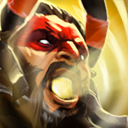 Primal Roar) that stops magic-immune targets and can be used to initiate together with
Primal Roar) that stops magic-immune targets and can be used to initiate together with 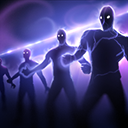 Wall of Replica and/or
Wall of Replica and/or  Overgrowth. The real problem is the early game:
Overgrowth. The real problem is the early game:  Juggernaut,
Juggernaut,  Rubick and
Rubick and  Jakiro will most likely go for an aggressive trilane while lone Druid will solo farm bot and hopefully, with some lucky entangles by the Bear, get some free kills. So, the Dire trilane has to play very passively and protect their towers at all times:
Jakiro will most likely go for an aggressive trilane while lone Druid will solo farm bot and hopefully, with some lucky entangles by the Bear, get some free kills. So, the Dire trilane has to play very passively and protect their towers at all times:  Treant Protector really shines at doing so, and he will be the main problem for the Radiant lineup. Lastly, if
Treant Protector really shines at doing so, and he will be the main problem for the Radiant lineup. Lastly, if  Rubick manages to steal one of the three initiation spells the Dire Heroes have, they will keep on winning teamfights and push towers with them, thus winning the game.
Rubick manages to steal one of the three initiation spells the Dire Heroes have, they will keep on winning teamfights and push towers with them, thus winning the game.





vs.





In this case, the Radiant team is going for a teamfighting strategy: as soon as  Naga Siren pops her ultimate the other four Heroes can output a huge amount of damage with their own skills and, as
Naga Siren pops her ultimate the other four Heroes can output a huge amount of damage with their own skills and, as  Jakiro's
Jakiro's  Ice Path extends the disable even more, it's impossible to survive if you get caught out of position by the
Ice Path extends the disable even more, it's impossible to survive if you get caught out of position by the  Song of the Siren. For this reason, the Dire team has two initiators (
Song of the Siren. For this reason, the Dire team has two initiators ( Clockwerk and
Clockwerk and  Storm Spirit) that mess up with the enemy positioning and can be used to catch lone enemies;
Storm Spirit) that mess up with the enemy positioning and can be used to catch lone enemies;  Alchemist is a very tanky carry that should be able to survive the teamfight combo if BKBed. Talking about the trilanes, the Radiant Heroes synergize really well with each other and can get a lot of early kills. The main problem is the
Alchemist is a very tanky carry that should be able to survive the teamfight combo if BKBed. Talking about the trilanes, the Radiant Heroes synergize really well with each other and can get a lot of early kills. The main problem is the  Shadow Demon +
Shadow Demon +  Lina combo: for this reason,
Lina combo: for this reason,  Gyrocopter might prefer to get free farm against the
Gyrocopter might prefer to get free farm against the  Clockwerk and, even though
Clockwerk and, even though  Alchemist will probably outfarm him, big teamfights should win the game for them if Clock and Storm don't interfer.
Alchemist will probably outfarm him, big teamfights should win the game for them if Clock and Storm don't interfer.





vs.





Analyzing the Dire lineup, the team probably wants their  Lifestealer to get a lot of farm in a small amount of time, so that he can outcarry the enemies and win the game;
Lifestealer to get a lot of farm in a small amount of time, so that he can outcarry the enemies and win the game;  Magnus can use his
Magnus can use his 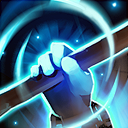 Empower on N'aix and make wonderful plays with with well-placed initiations, while
Empower on N'aix and make wonderful plays with with well-placed initiations, while  Bounty Hunter is there for getting extra gold from kills and surviving in the off-lane. On the Radiant side, the draft is so well-made that every Hero can escape from
Bounty Hunter is there for getting extra gold from kills and surviving in the off-lane. On the Radiant side, the draft is so well-made that every Hero can escape from  Lifestealer:
Lifestealer:  Weaver can go invisible and can easily fight the enemy carry by kiting him,
Weaver can go invisible and can easily fight the enemy carry by kiting him,  Bane has
Bane has  Nightmare and a
Nightmare and a  Rage-piercing ultimate,
Rage-piercing ultimate,  Nyx Assassin can go inivisible too,
Nyx Assassin can go inivisible too,  Dragon Knight is super tanky and has a stun,
Dragon Knight is super tanky and has a stun,  Dark Seer can
Dark Seer can  Surge away. Still, the only way to win against a farmed
Surge away. Still, the only way to win against a farmed  Lifestealer is to let
Lifestealer is to let  Weaver get his space and put some pressure on the enemy safe lane, hence why the team has a
Weaver get his space and put some pressure on the enemy safe lane, hence why the team has a  Dark Seer who can make
Dark Seer who can make  Ion Shells. Regarding the trilanes, in this case the Radiant team could either go to the safe lane or attempt an aggressive trilane:
Ion Shells. Regarding the trilanes, in this case the Radiant team could either go to the safe lane or attempt an aggressive trilane:  Weaver is difficult to catch and the other two supports are very good for initiating. From the Dire perspective, they would most likely go to the safe lane since the two supports are perfect for stopping the
Weaver is difficult to catch and the other two supports are very good for initiating. From the Dire perspective, they would most likely go to the safe lane since the two supports are perfect for stopping the  Dark Seer: as soon as he gets caught with
Dark Seer: as soon as he gets caught with  Open Wounds and activates his
Open Wounds and activates his  Surge, both
Surge, both  Rubick and
Rubick and  Crystal Maiden can disable him for a pretty big amount of time.
Crystal Maiden can disable him for a pretty big amount of time.





vs.


 Outworld Devourer
Outworld Devourer

Ouch, this time the Radiant team had the possibility to pick  Io! Normally, the team with
Io! Normally, the team with  Io is expected to easily win the game; in this case, though, the Dire team has a good mixture of teamfight disables and single-target initiations that can possibly make them win: a
Io is expected to easily win the game; in this case, though, the Dire team has a good mixture of teamfight disables and single-target initiations that can possibly make them win: a  Chronosphere-
Chronosphere- Macropyre-
Macropyre-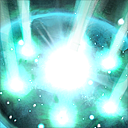 Sanity's Eclipse combo can destroy an entire team; Outworld Devourer can also one-shot
Sanity's Eclipse combo can destroy an entire team; Outworld Devourer can also one-shot  Chaos Knight's illusions. But anyway, if CK gets enough farm early on and
Chaos Knight's illusions. But anyway, if CK gets enough farm early on and  Io gets fast levels, their ganks will be very difficult to avoid and will make them win the game if
Io gets fast levels, their ganks will be very difficult to avoid and will make them win the game if  Faceless Void doesn't have much early farm. What about the trilanes? In this case, they are both expected to play a safe trilane:
Faceless Void doesn't have much early farm. What about the trilanes? In this case, they are both expected to play a safe trilane:  Chaos Bolt and
Chaos Bolt and  Cold Feet synergize very well while the
Cold Feet synergize very well while the  Spirits can help in zoning out the off-laning
Spirits can help in zoning out the off-laning  Batrider if needed; from the Dire side,
Batrider if needed; from the Dire side,  Jakiro and
Jakiro and  Rubick have better scaling into late game and can pull-off decent smoke ganks.
Rubick have better scaling into late game and can pull-off decent smoke ganks.


















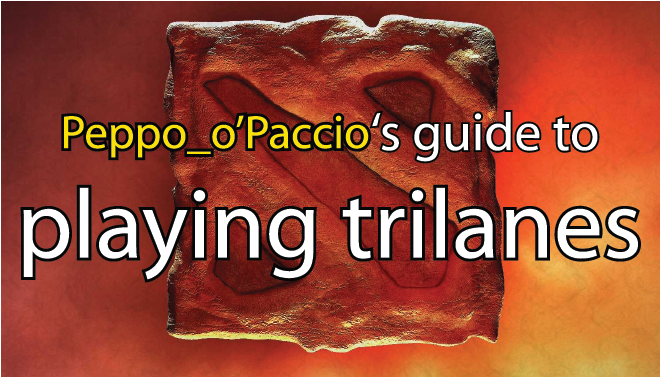
 Spoiler: Click to view
Spoiler: Click to view
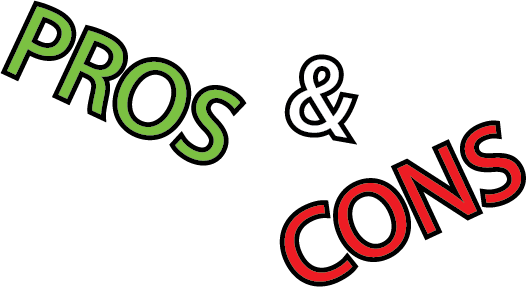

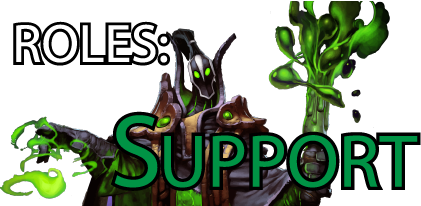
























































































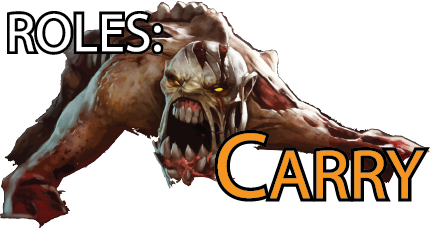










































































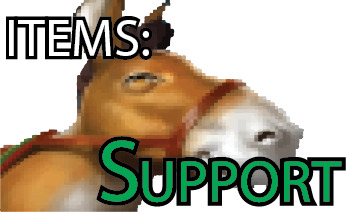







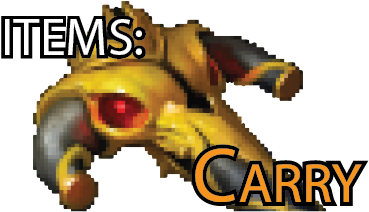



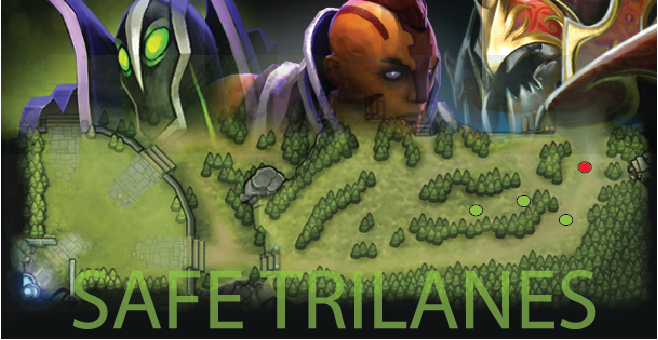

 Gold
Gold
 Experience
Experience
 Items
Items








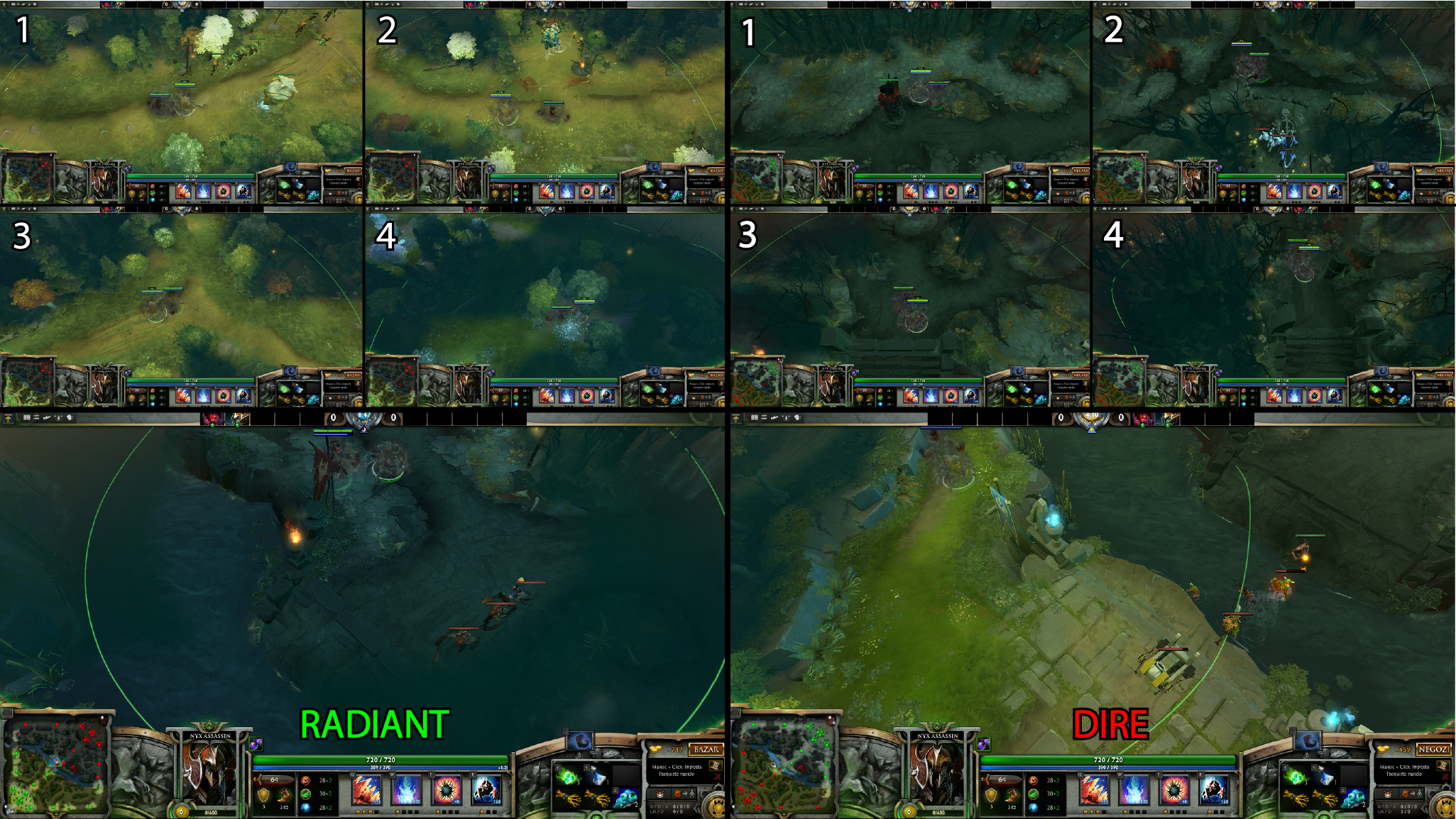
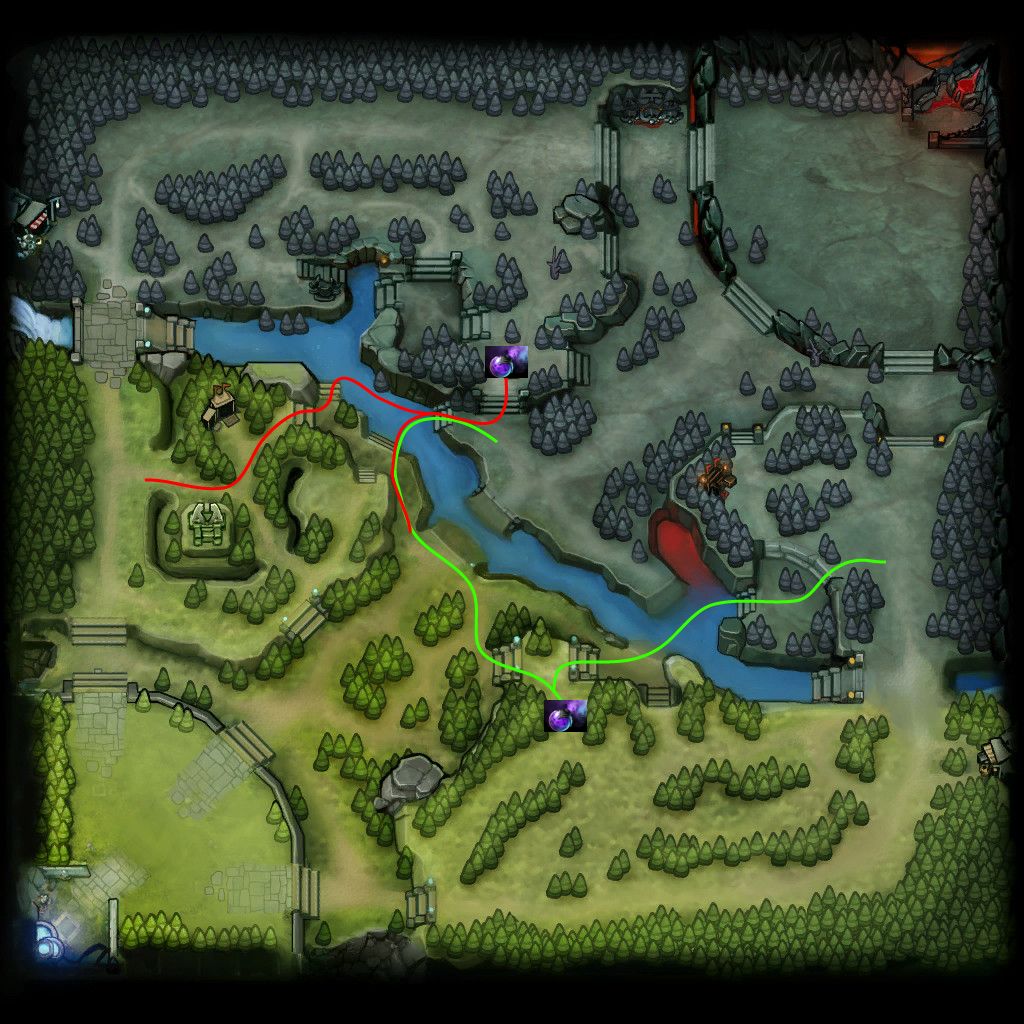




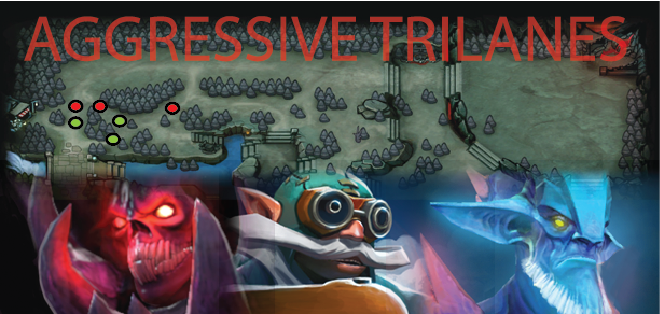


Quick Comment (12) View Comments
You need to log in before commenting.